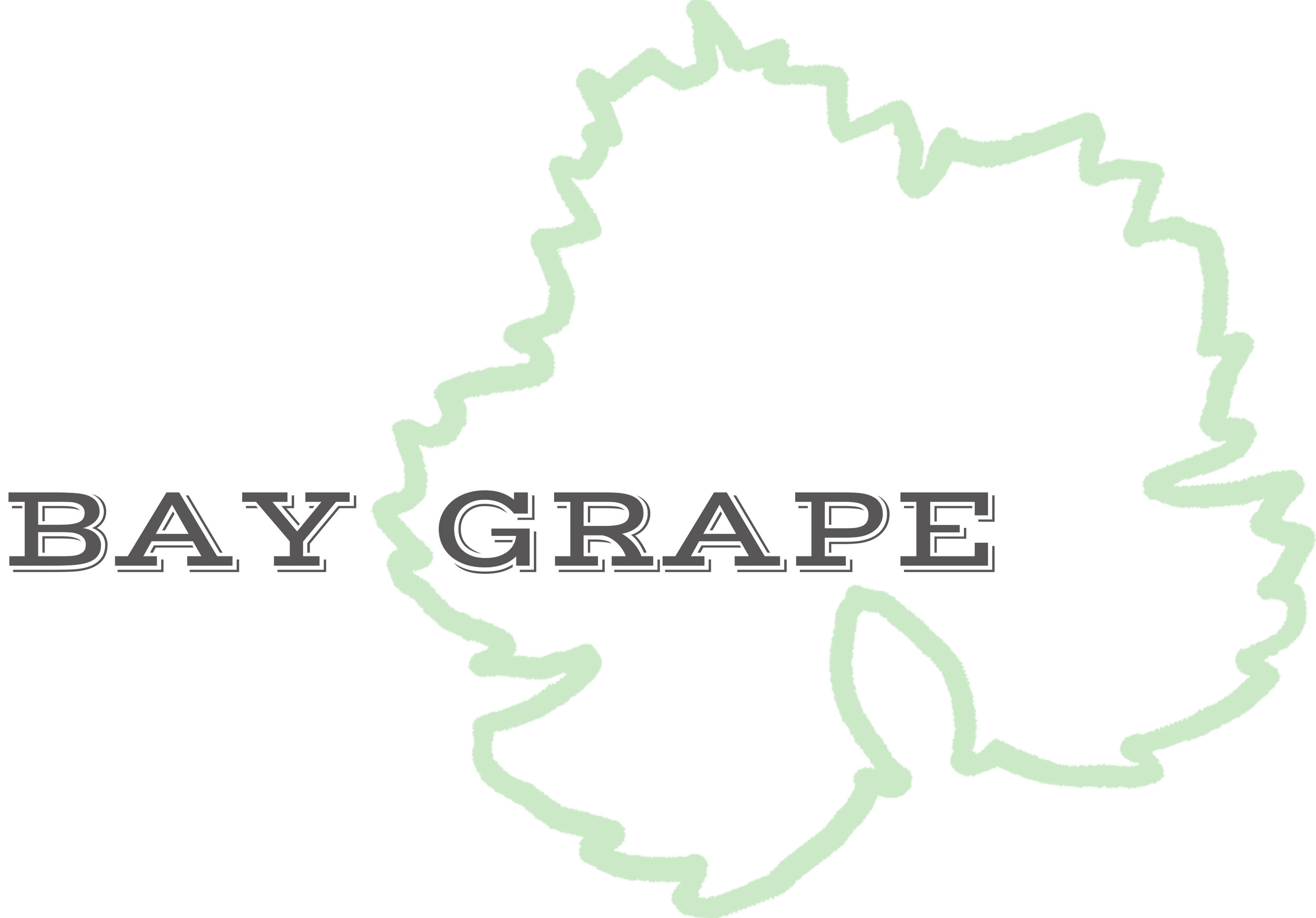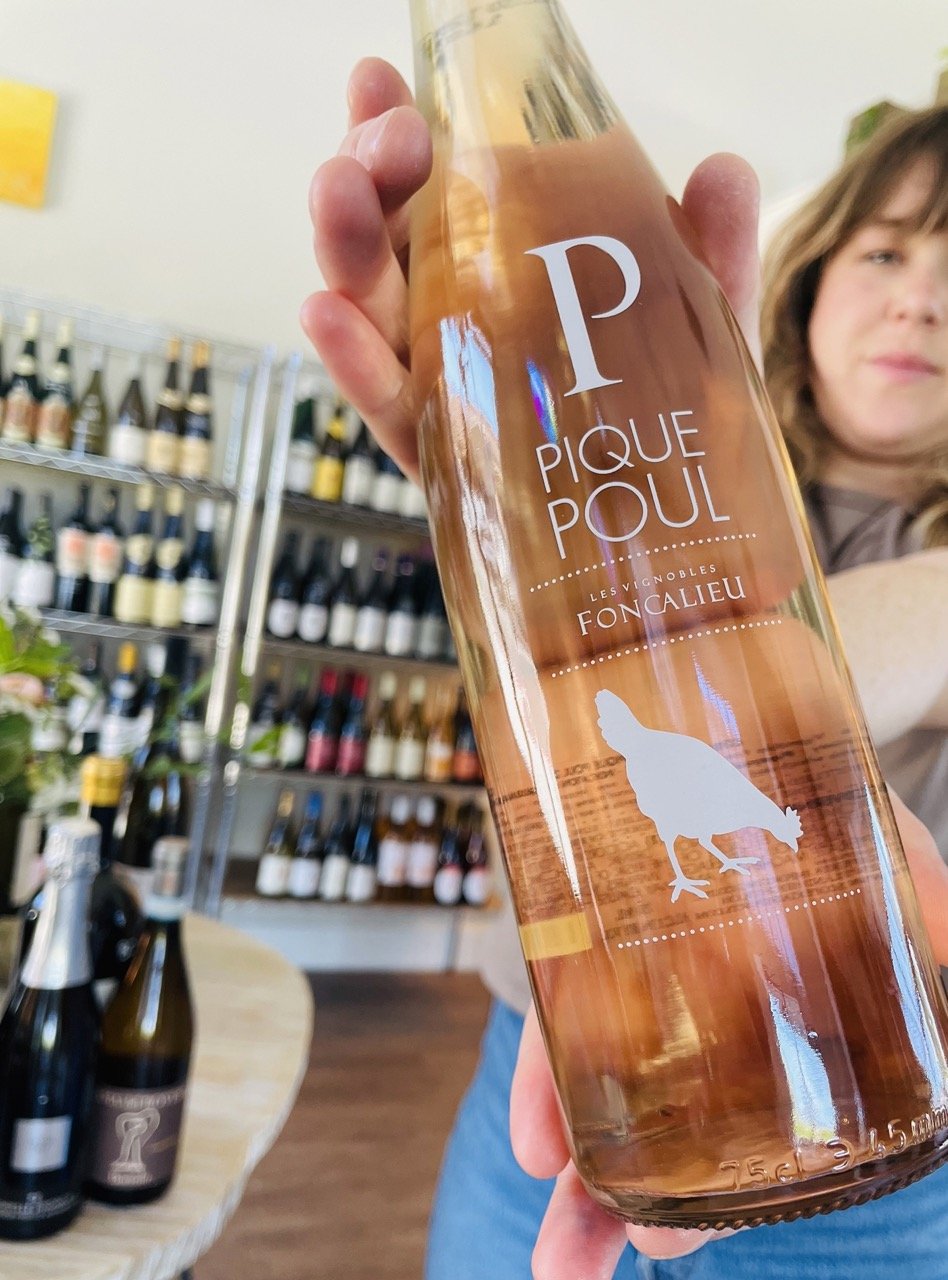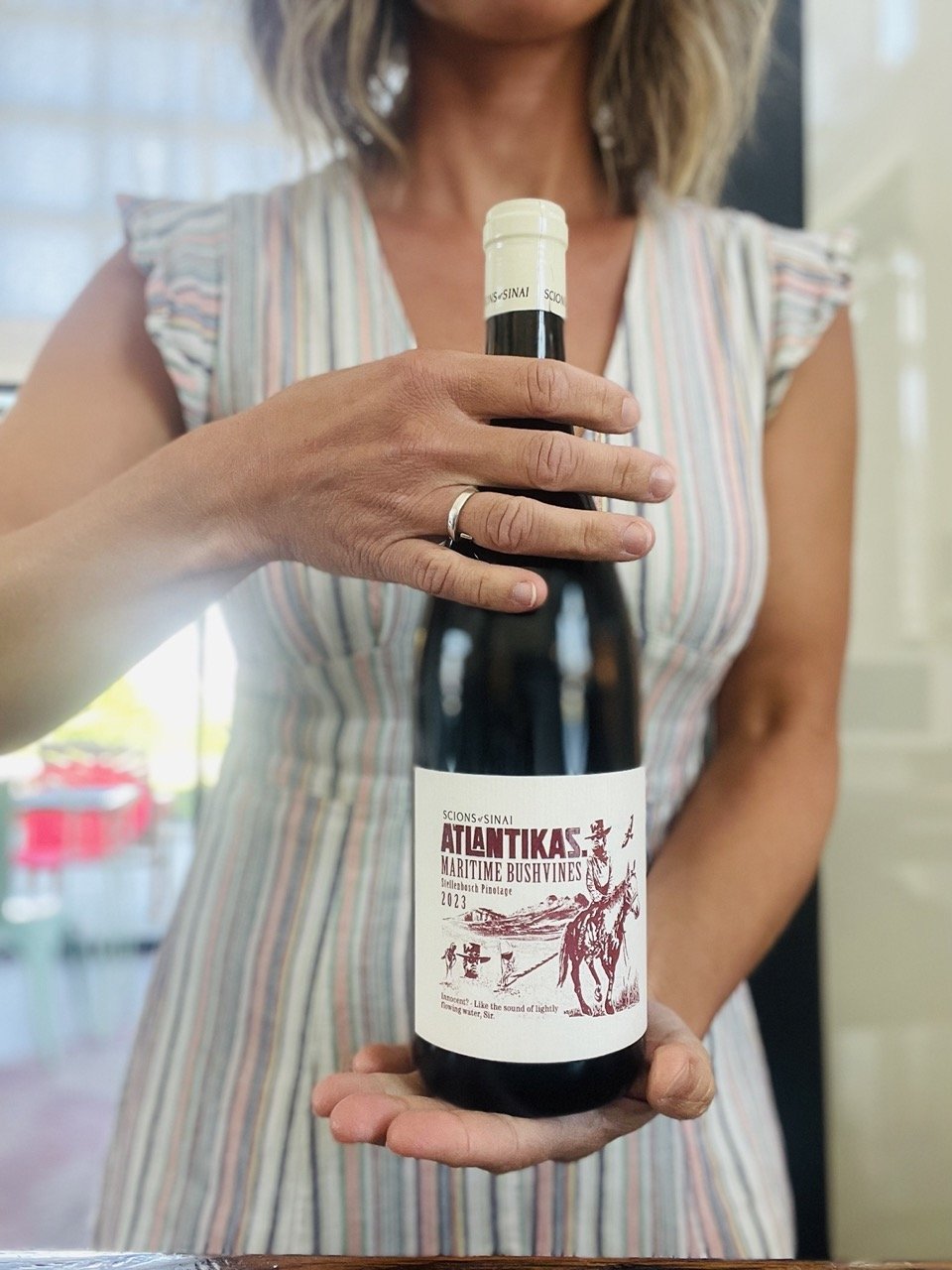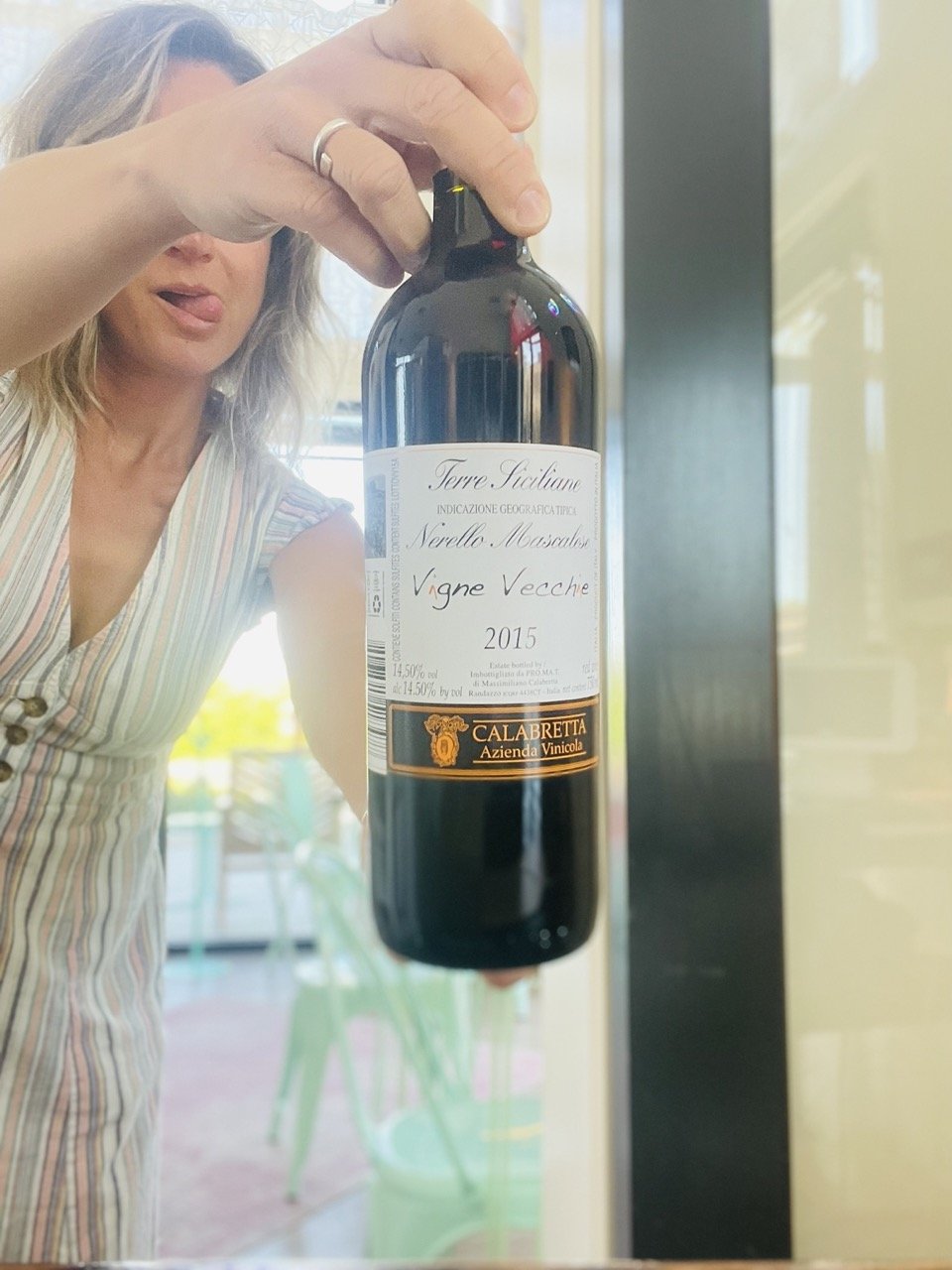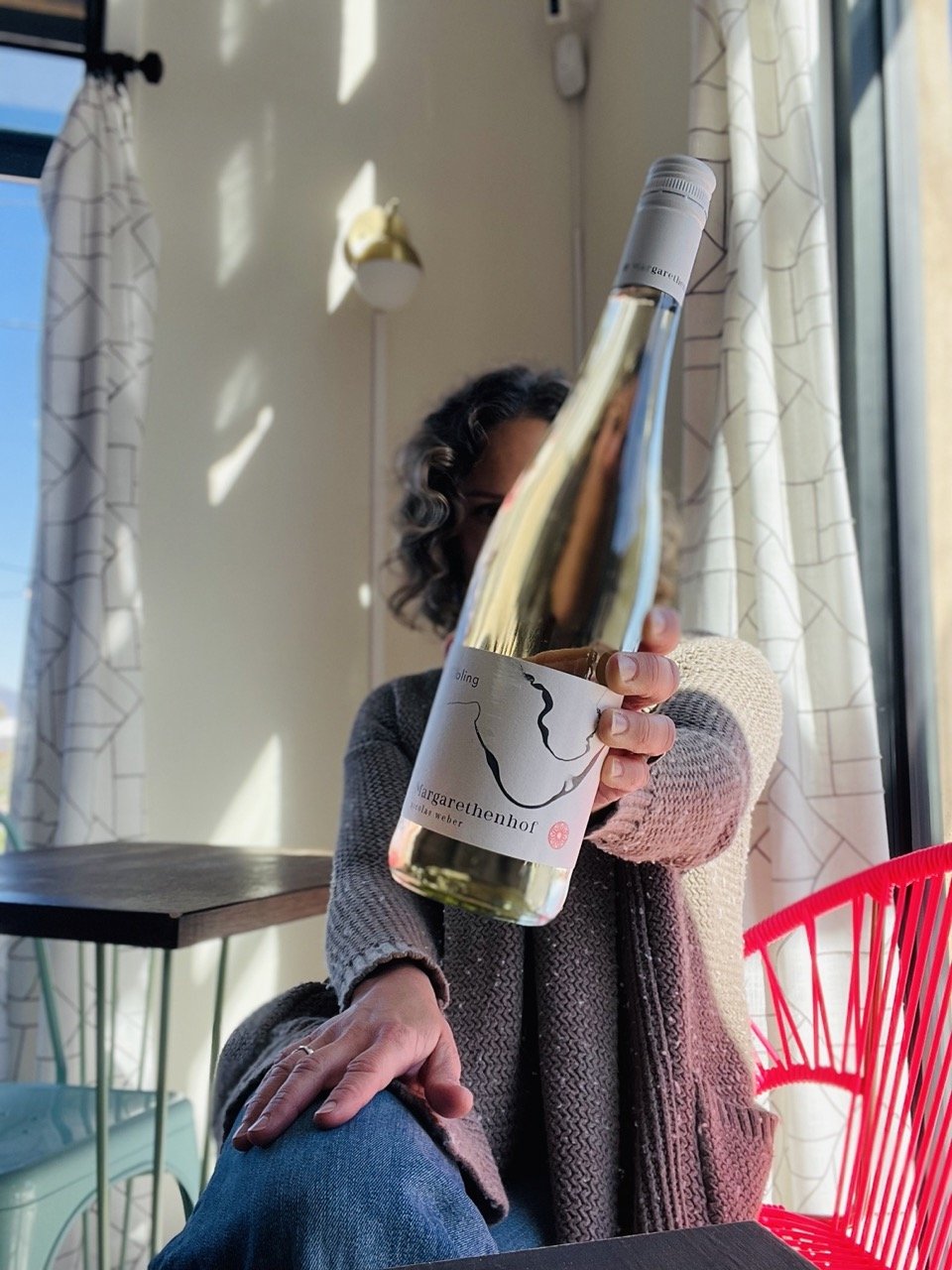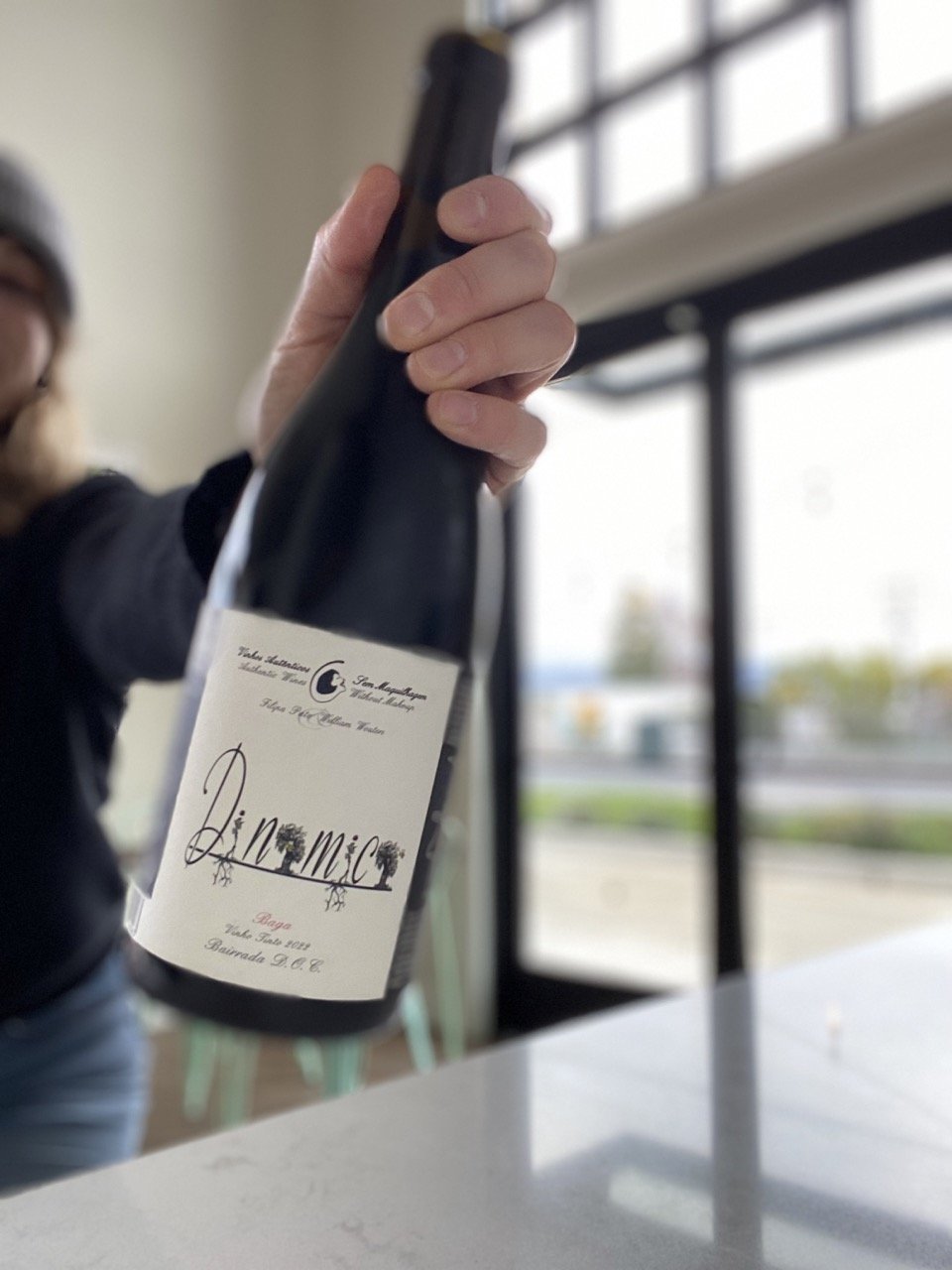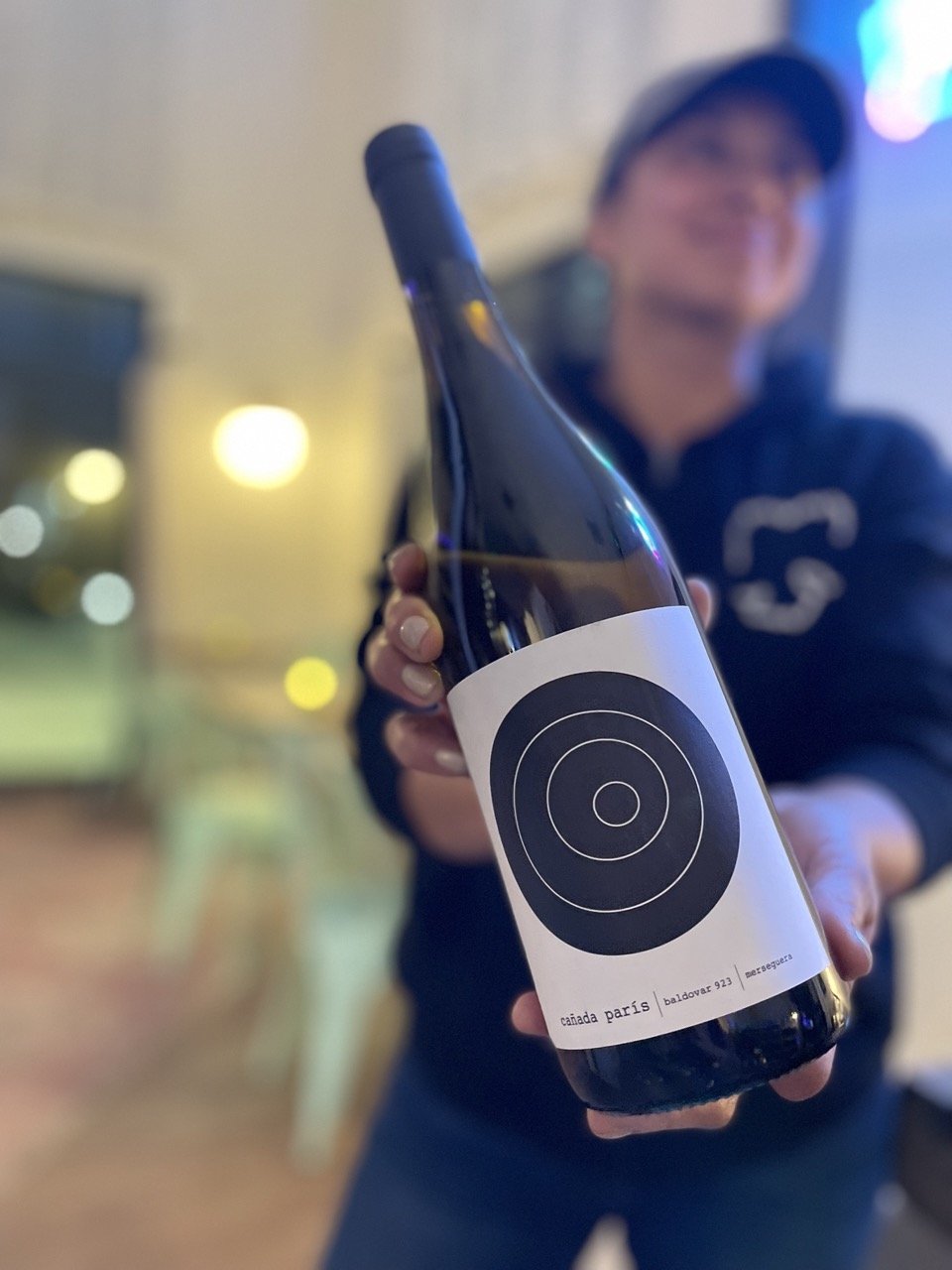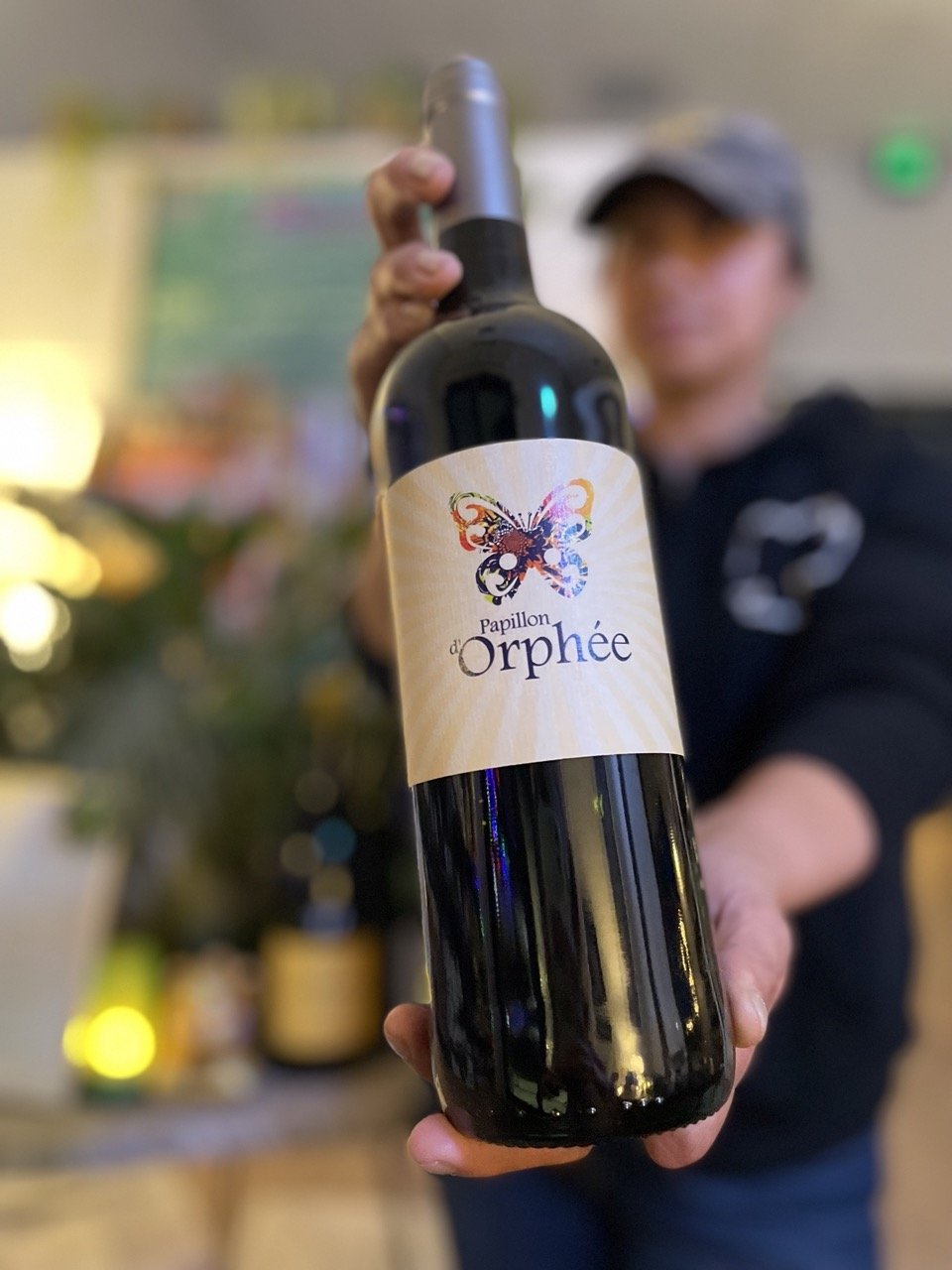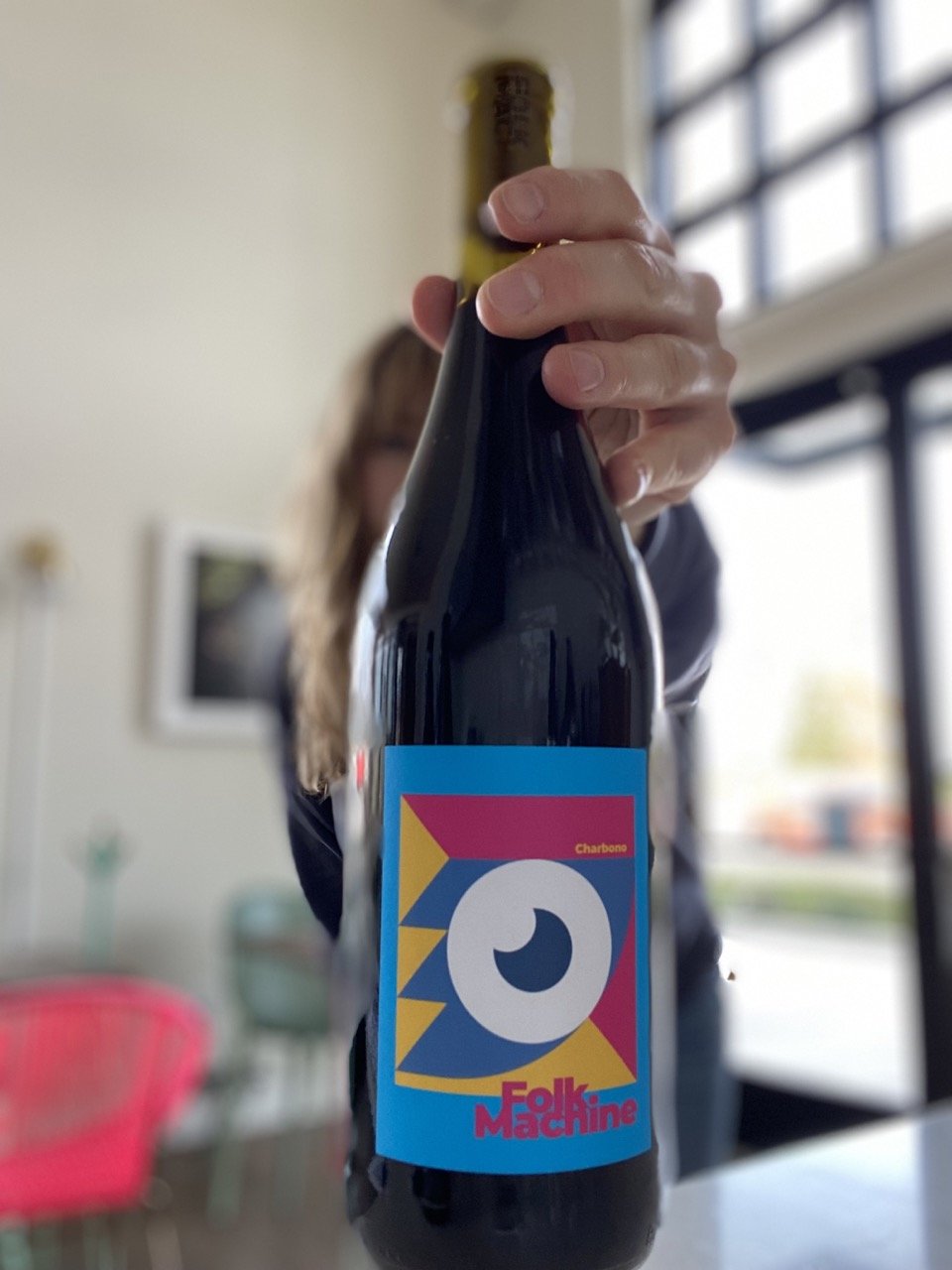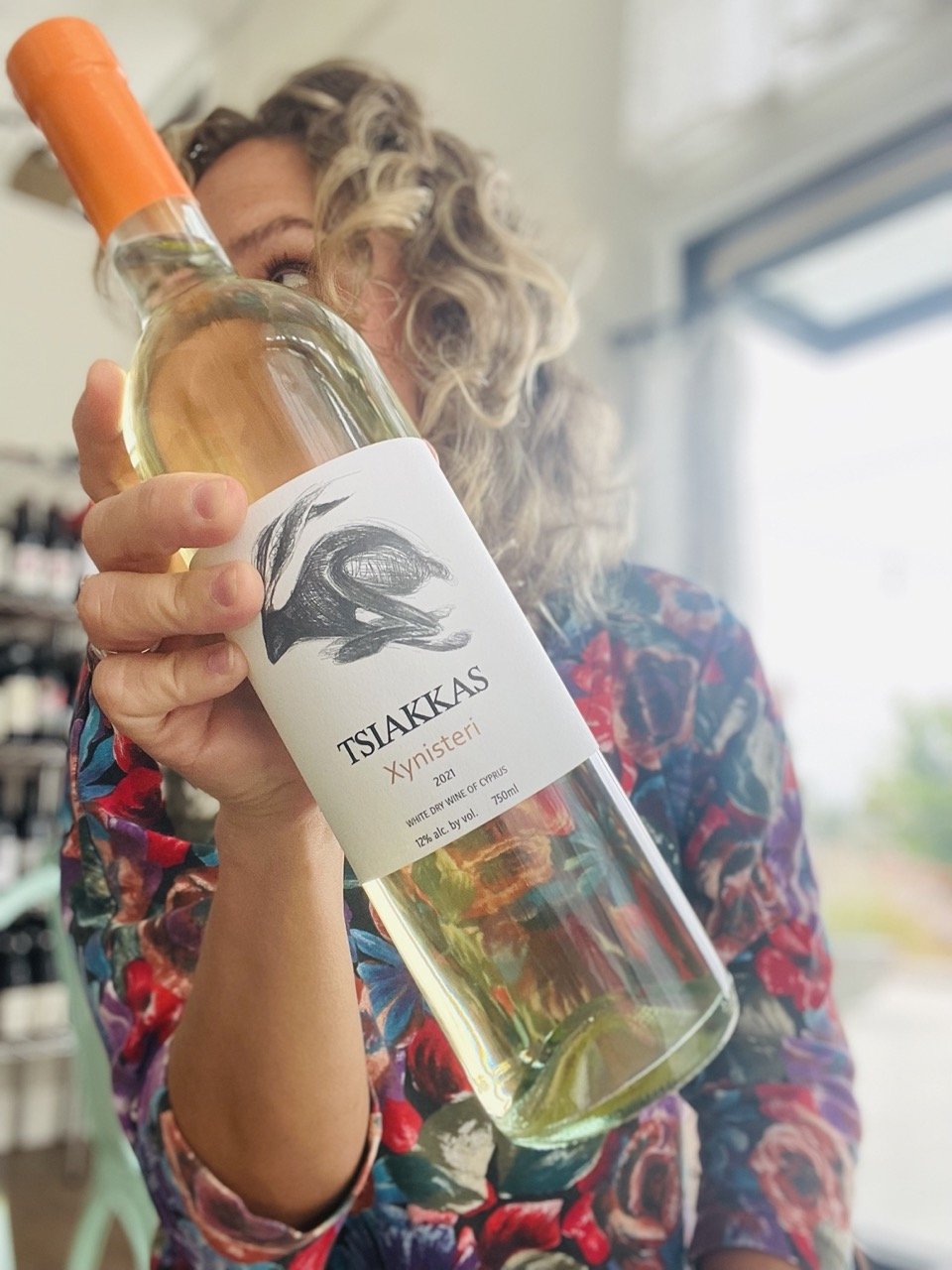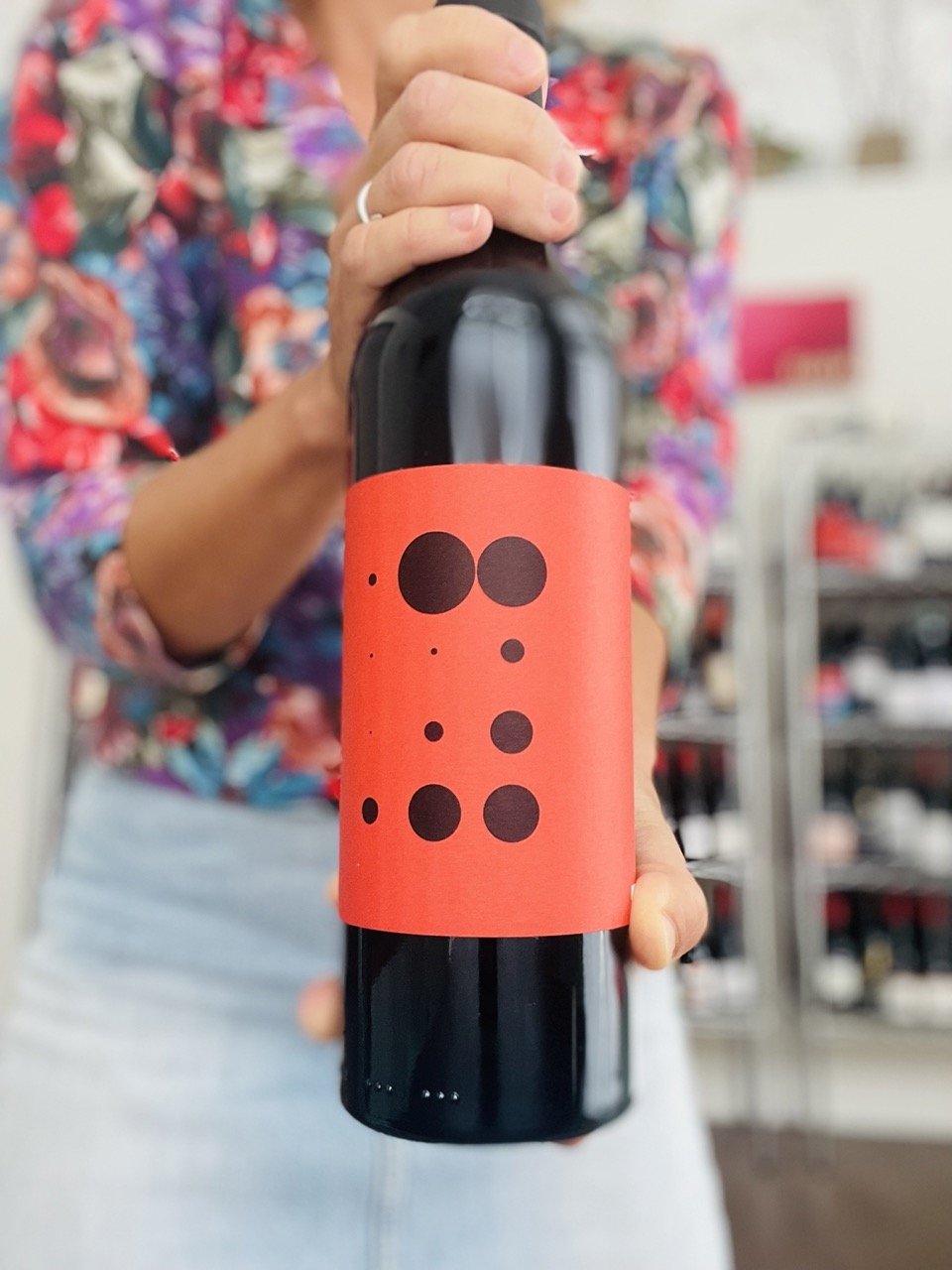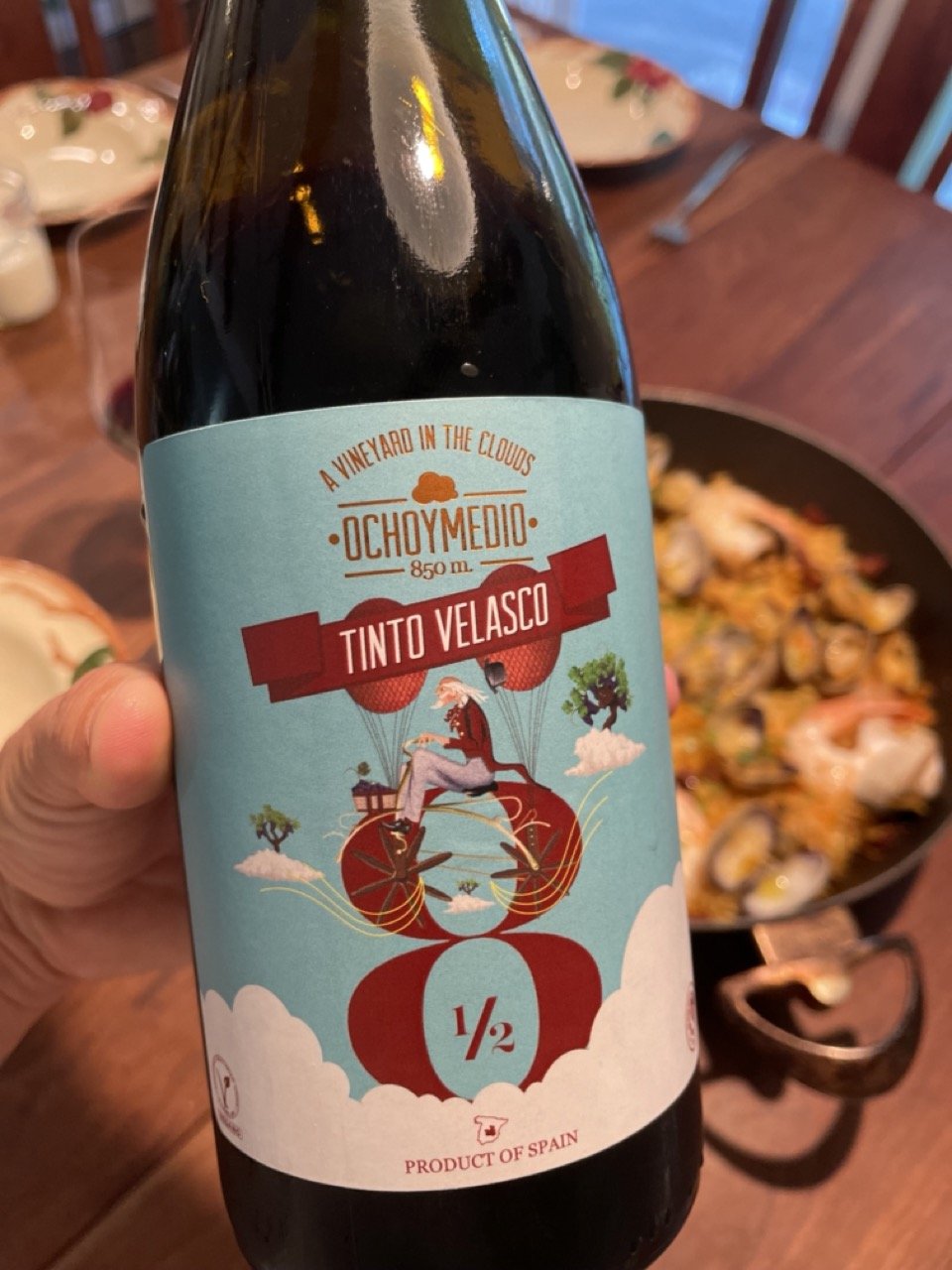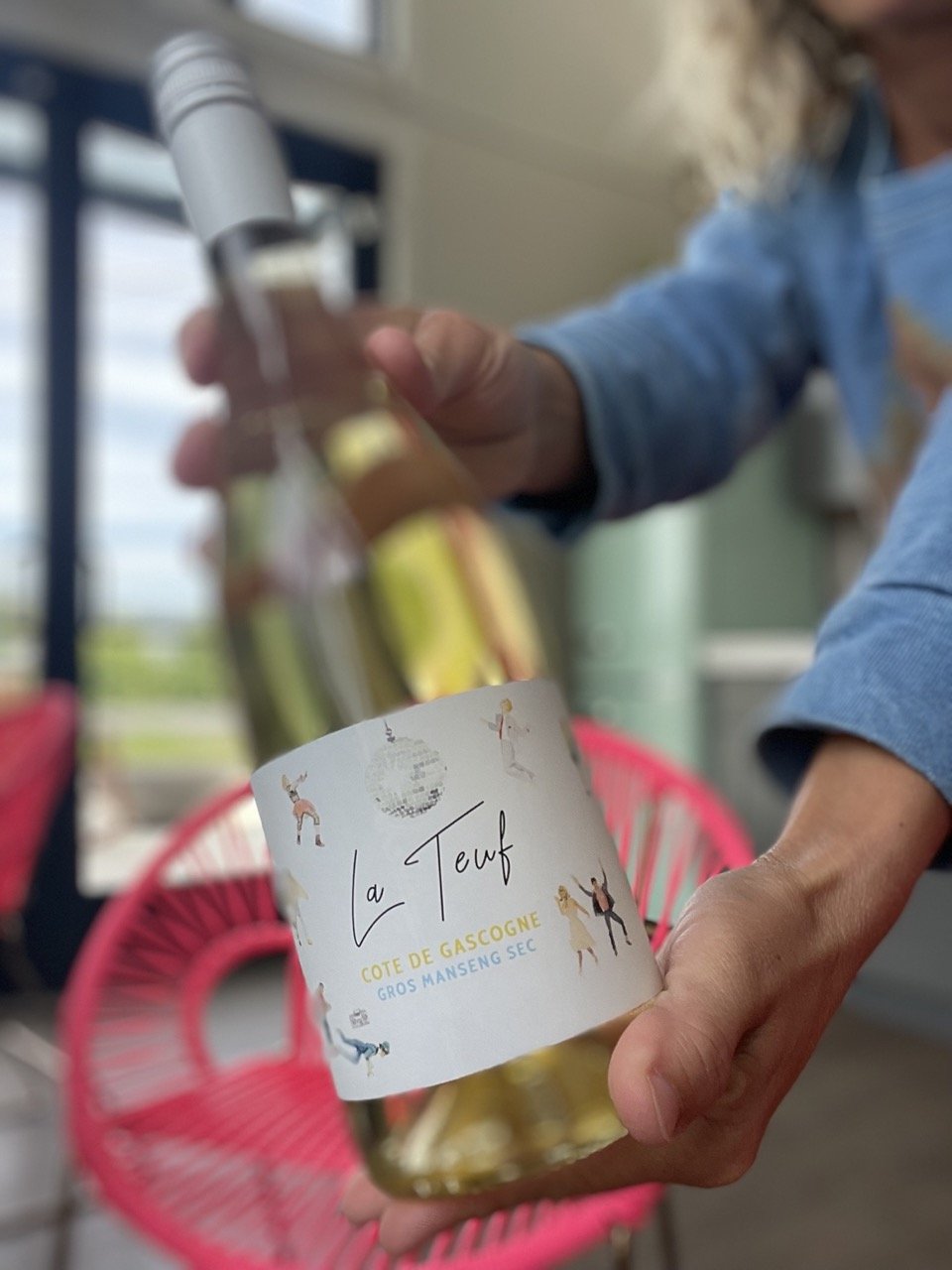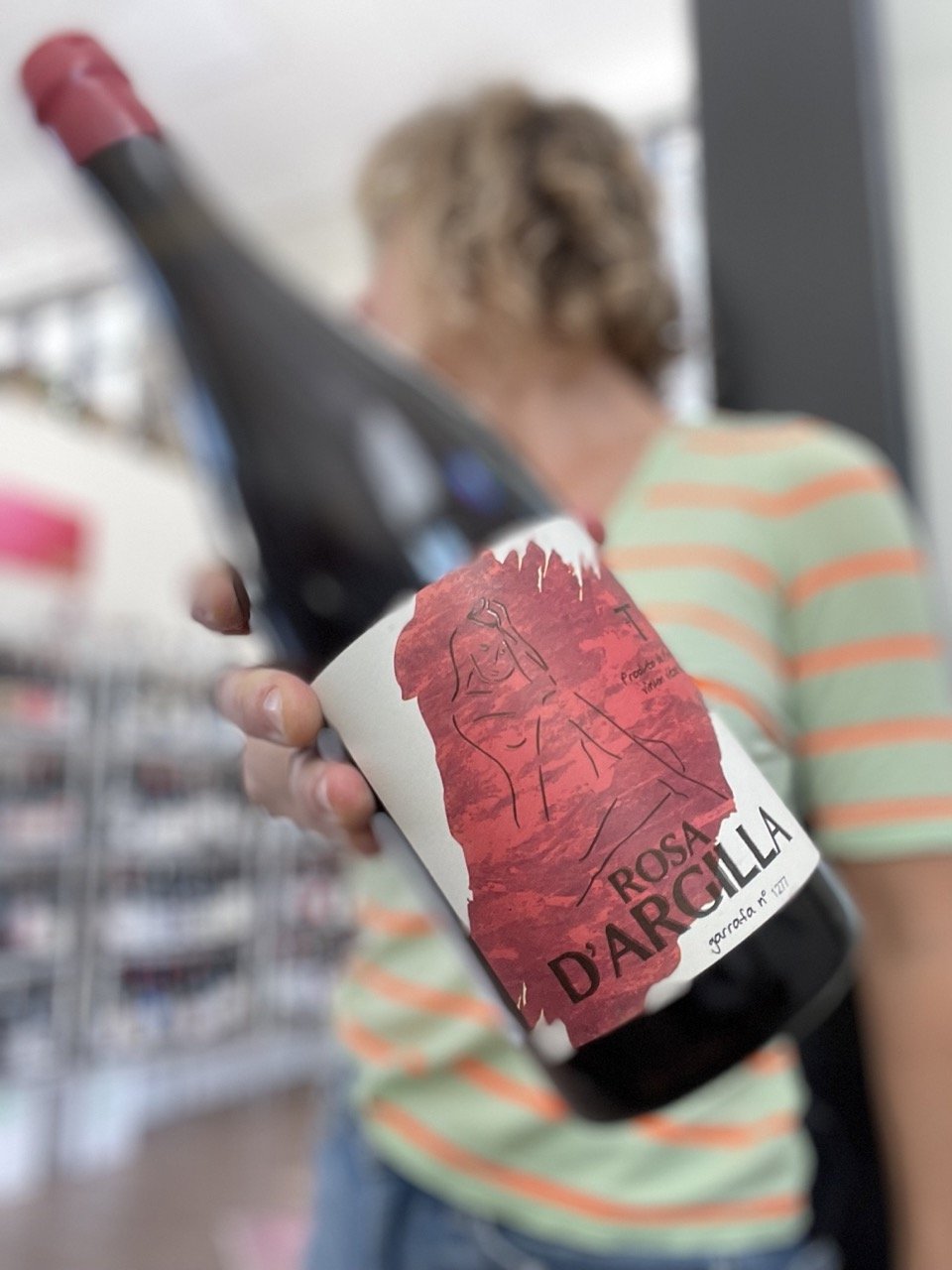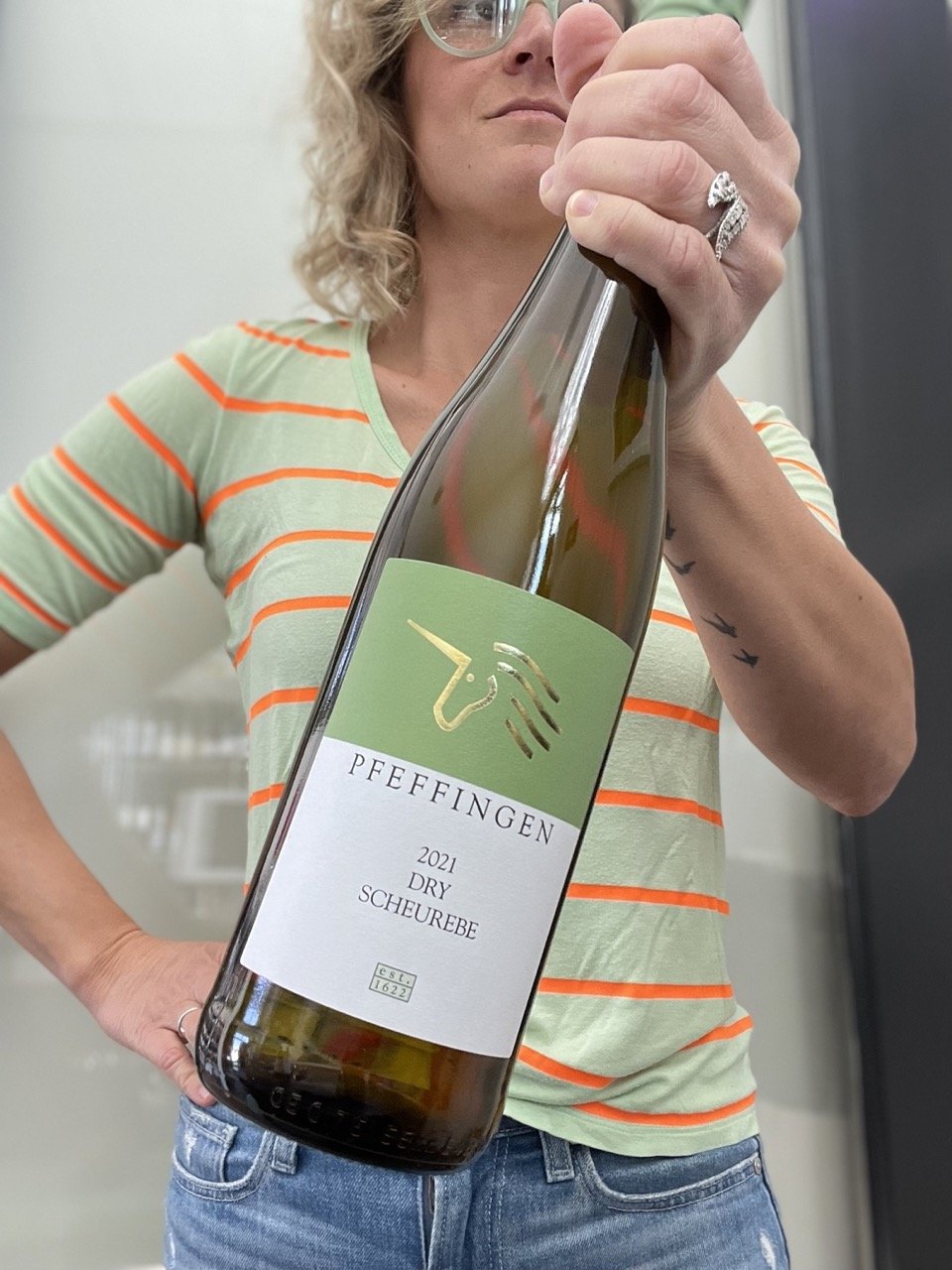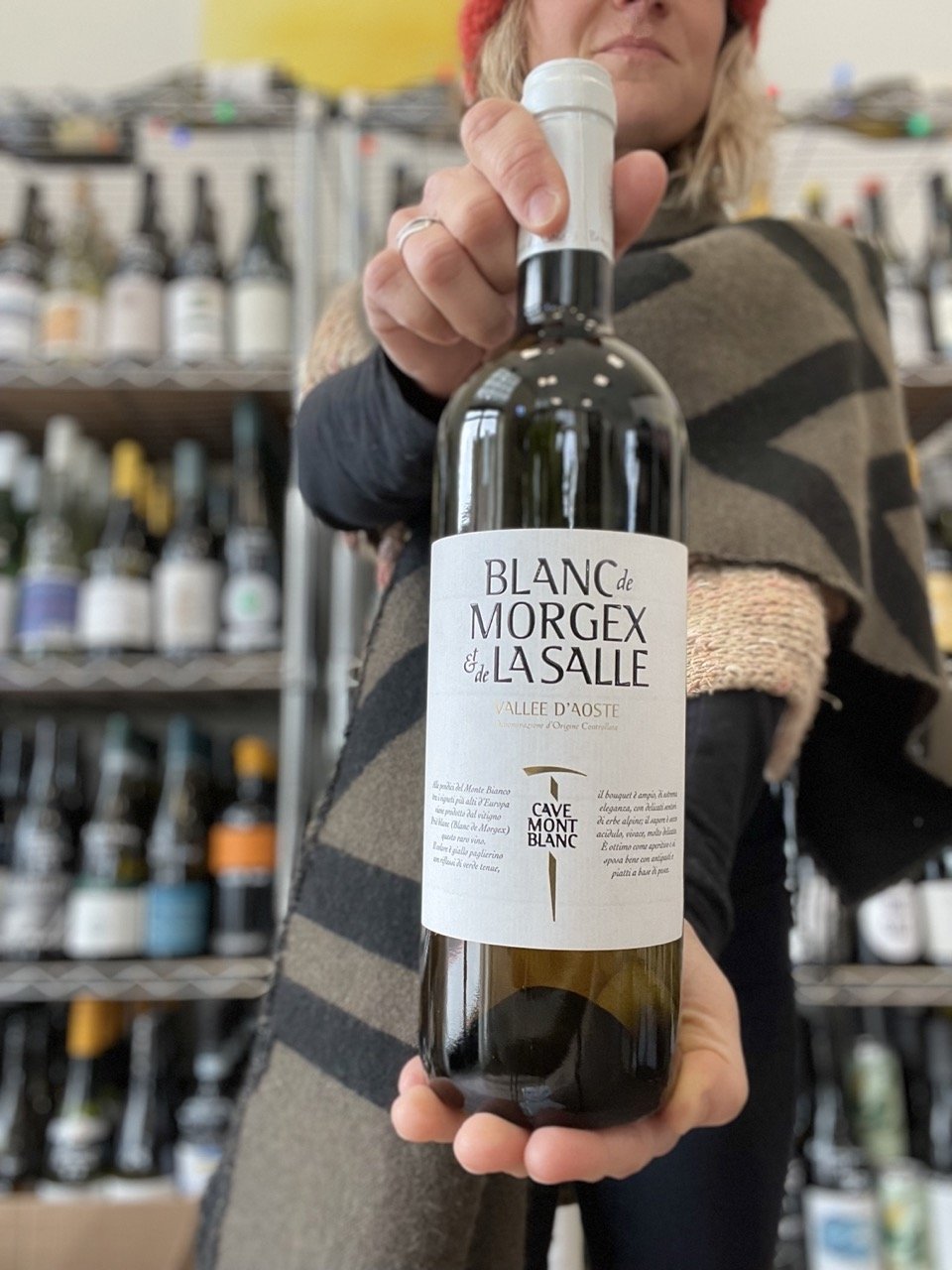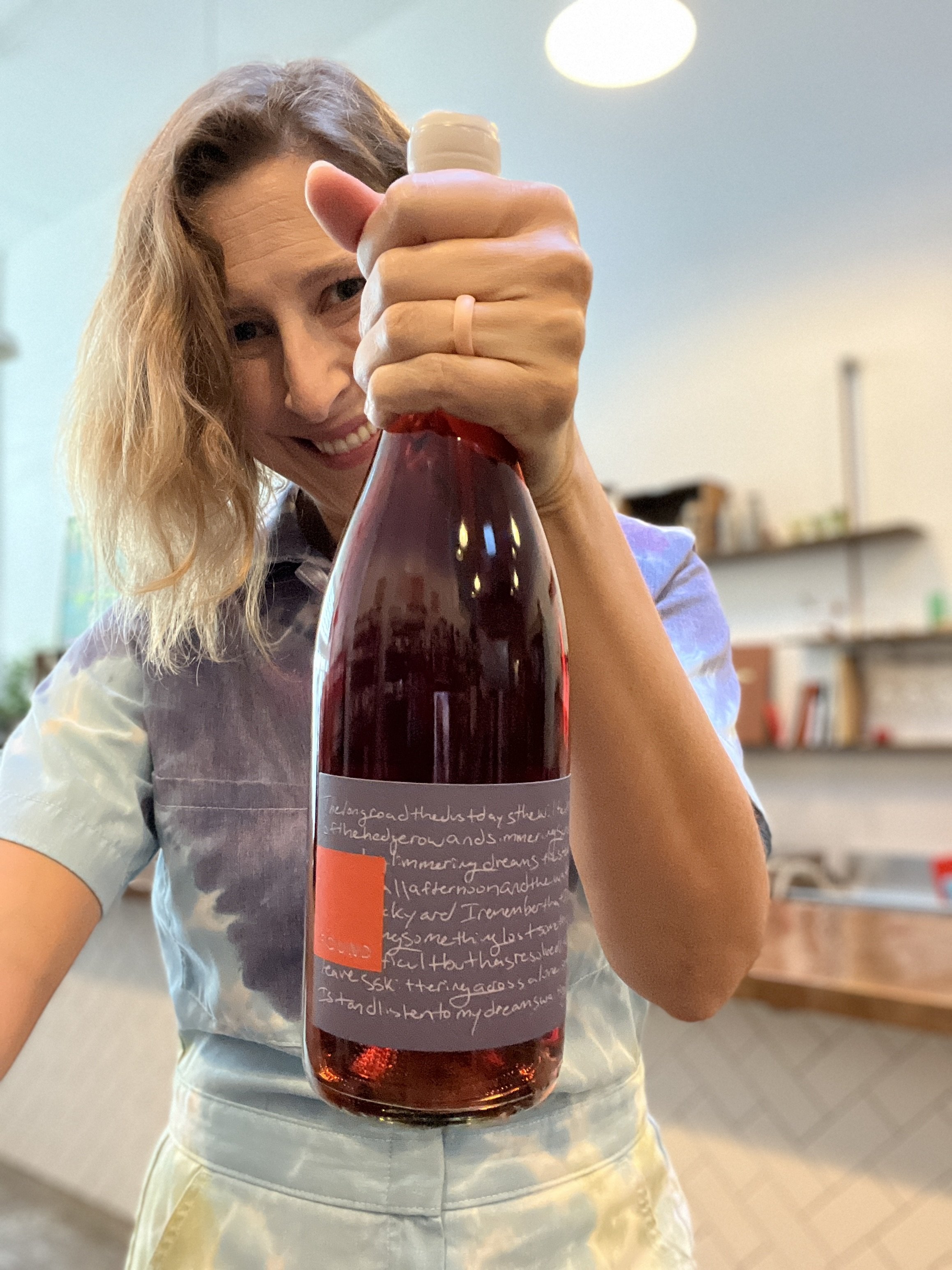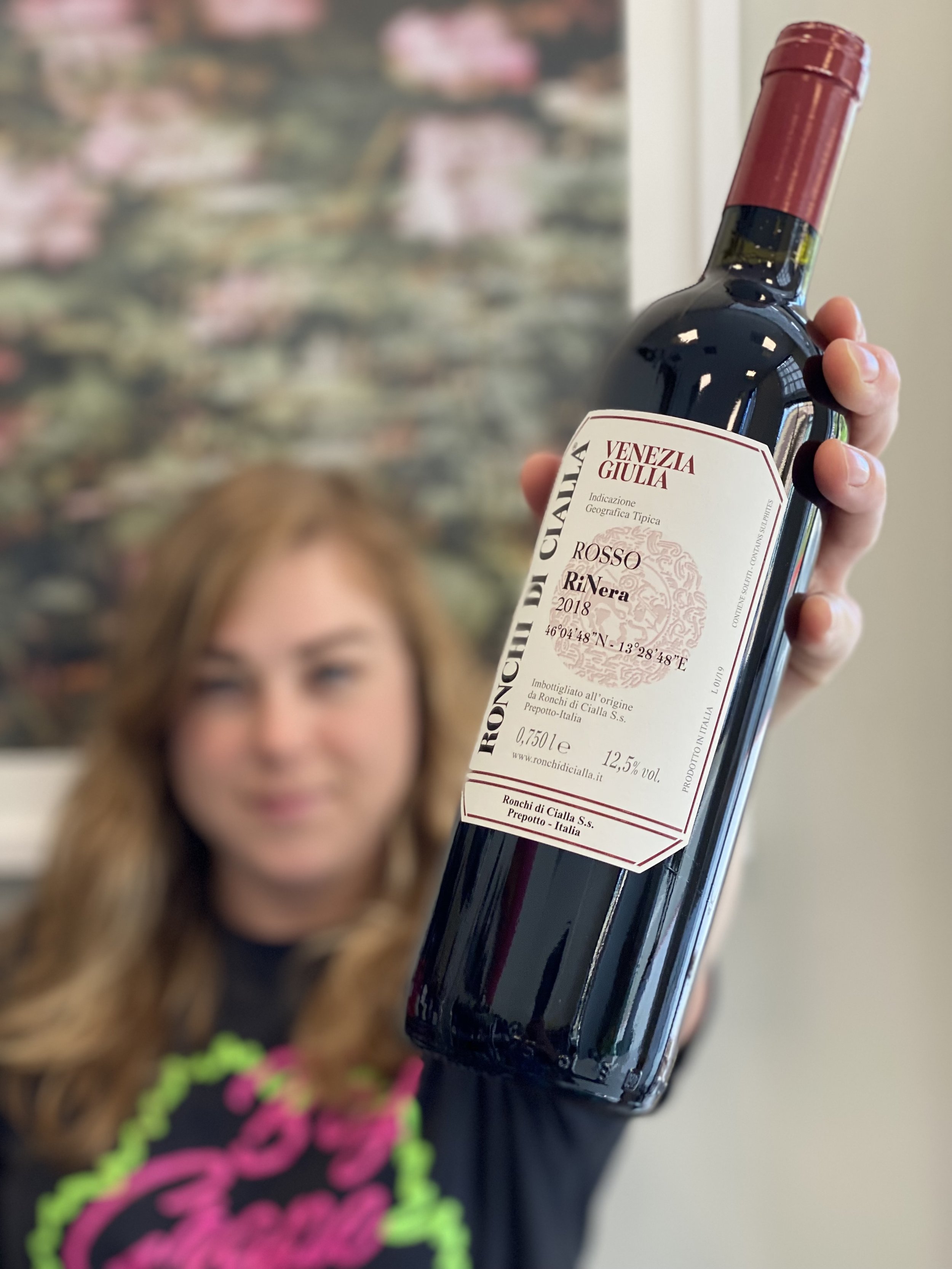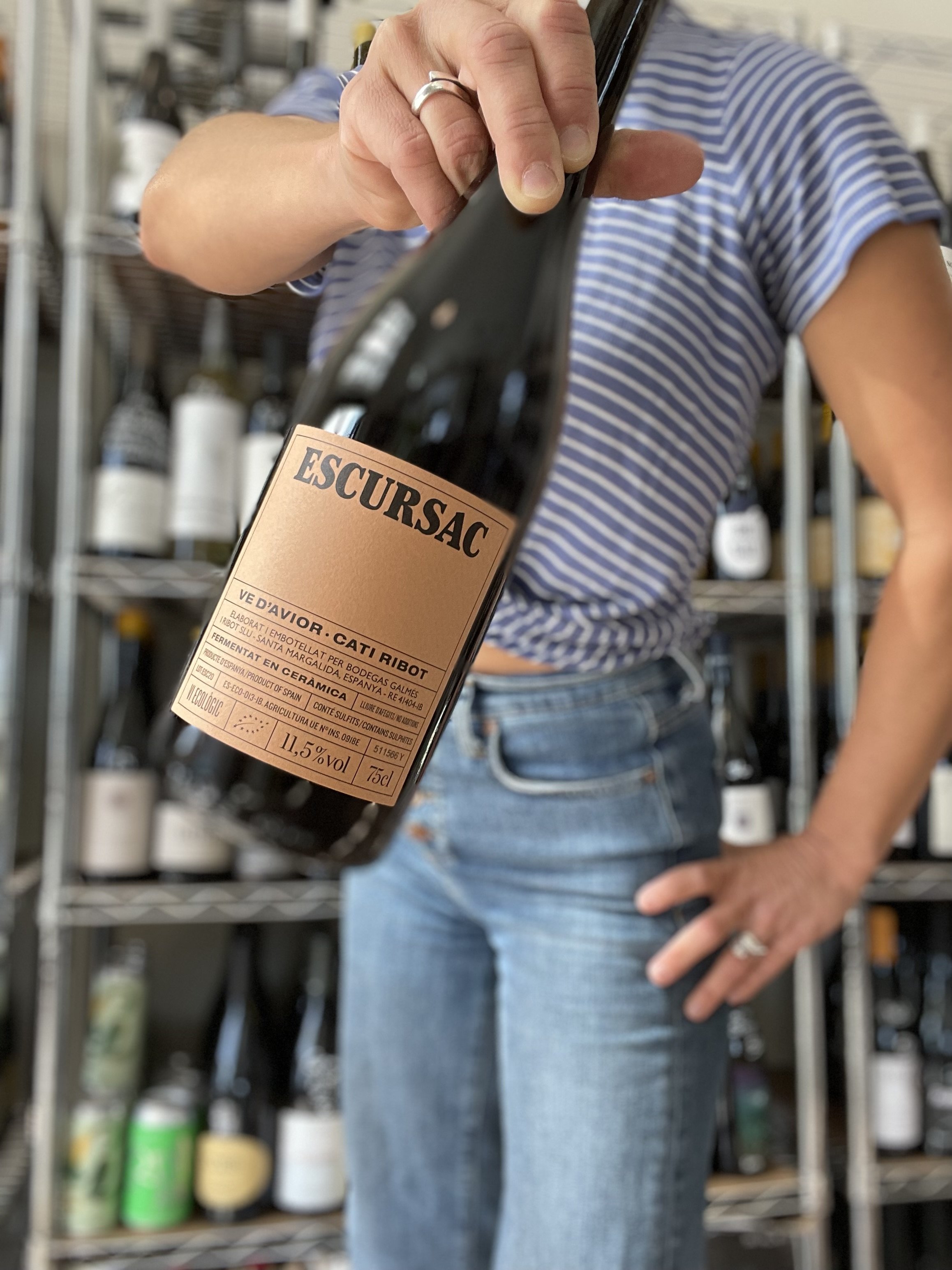Weird Wine grapes
cave of wonders
You’re IN! Thanks so so so much for being a part of our fun club. In addition to your awesome and weird wines, we hope you also enjoy our notes and bonus member content here so you can learn and drink well!
Want to browse your order history and re-up on some past favorites? Log in to your member account to shop:
Spring 2025
ADEGA DO VULCAO AMEIXAMBAR
'COLHEITA SELECIONADA'
ARINTO 2020
Adega was born on the Island of Faial, near the dos Capelinhos volcano formed in 1957 following an eruption started in the sea a mile from the coast. The sand and ashes expelled from the volcano for over a year submerged the surrounding land, creating an unparalleled terroir in the following decades. Soon, the project was extended to the island of Pico, where the marvelous old UNESCO heritage vineyards are planted in the lava crust. Two islands, two different volcanic terroirs for a brand that express love for extreme nature and its own relationship with man.
White grape: Arinto
Hails from: Portugal
Viticultural Notes: Grown across Portugal, Arinto develops intense character driven by the unique marine conditions and fresh volcanic soils when grown in the middle of the atlantic on the Azores. The marine can whip across the vineyards battering the vines, so they have to be trained low to the ground behind volcanic rock walls. Everything in the vineyard is worked by hand.
Stylistic Notes: Aged in Slovenian barrels, this Arinto speaks to the intense vineyard character that shines through almost modern wine making. Flinty soils and saline aromas with rounded edges from the oak and lees treatment.
Wine-Specific Notes: This wine has a modern structure elegance rarely found from a grape with more classic mineral profile from areas like Vinho Verde. In fact, in comparison with most Arinto in Vinho Verde, this wine reflects the sense of place from the volcanic islands and wears the modern wine making like a well tailored suit—it’s unique terroir and varietal character are enhanced, rather than overpowered.
Pairing Suggestions: Oysters, muss, Grilled Fishes, Chicken Tagine
Cantina Della Volta Bruttorosso Lambrusco di Sorbara Methodo Classico
Christian Dellei is 4th generation lambrusco producer in Emiglia Romagna. Traditionally Lambruscos were made in a style more akin to ‘Pet Nat’ than Method Champenoise, but Christians father ‘Beppe’ led the revolution in the area to pursue Cru style Lambrusco, celebrating varietal and vineyard specific wines made in Method Champenoise.
White grape: Sorbara
Hails from: Emiglia Romagna, Italy
Viticultural Notes: Sorbara is the lightest and thinnest skin of all Lambrusco grapes making it one of the most challenging grapes to work with due to the moisture pressure in the low laying flats of the large glacial valley that distinguishes Emiglia Romagna as a region. The grapes are farmed in site specific vineyards without the use of any chemical pesticide or herbicide. Biodynamics are partially utilized but not always necessary due to the fertility of the soil.
Stylistic Notes: Method Champenoise meets pale red wine that produces a wine with supple fruit and ethereal aromatics. Fermented in stainless, aged for 6 months before bottling and another 9 months before disgorgement.
Wine-Specific Notes: This Brut Rosso captures the supple fruit aromas and ethereal aromatics. It’s bright acidity provides structure for it’s soft, nearly absent tannins.
Pairing Suggestions: Aged Parmesan Cheese with Saba, Pistachio Mortadella and Tortellini en brodo
Enderle & Moll MUller-Thurgau ‘Pur’ 2022
Enderle & Moll make wine just on the edge of the Black Forest in Baden, Germany. There are many ‘Cult’ wineries out there and these are amongst the cultiest. It’s just two guys, a shed and a basket press. Their Pinots have been compared to some of the best in the world and certainly sit amongst, if not the top of the heap, of German producers. Even Jancis Robinson, one of the most knowledgeable wine professionals on the planet referred to them as one of the cultiest producers in the world. With that much hype, you’d expect to hear more clap-back from industry professionals or consumers to mitigate expectations, yet I hear very little.
Wine grape: Muller-Thurgau
Hails from: Germany. Cross between Riesling and Madeleine Royale by Hermann Muller from the Swiss Canton of Thurgau.
Viticultural Notes: From 45 year old vines grown in Limestone and Sand Stone.
Wine Notes: This low-low Muller sees 6 days maceration. Aged in Steel with no filtration and low sulfur at bottling. Low 11.5% alcohol. The skin contact enhances the texture and salinity of the crisp fresh wine. Underripe melon underpins the savory aromatics and salinity.
Pairings: Speck wrapped melon, pork schnitzel.
Winter 2024/25
Tascante Buonora Etna Bianco 2023
Tascante is a Mt. Etna-based label from the historically significant Sicilian family Tasca d’Almerita… Tascante is a mash-up of Tasca + Etna spelled backwards—get it? Their certified sustainable vineyards cling to terraces at 2,500 feet elevation to the north and eastern slopes of the very active Mt. Etna volcano, and there’s no denying the local terroir when you taste these wines, all salt and smoke and wild scrubby herbs.
White grape: Carricante
Synonyms: Catanese Bianco
Hails from: Catania (Sicily), Italy
Viticultural Notes: It’s thought that Carricante’s name refers to its prolific production—carica means “load” in Italian—and the variety is also naturally very high in acidity, resulting in the need for a long, moderate to warm and dry autumn so levels can diminish before a later harvest.
Stylistic Notes: Tart and stony yet texturally dense with typical notes of citrus and fennel… hence an ideal complementary pairing for Sicilian cuisine!
Wine-Specific Notes: Have you ever freshly ground fennel seed yourself? Then sprinkled it over a slice of Cara Cara orange? Then maybe layered that over thin slices of fresh hamachi and dotted the whole thing with bits of Castelvetrano olive? Perhaps a drizzle of lemon-infused olive oil to finish the show? Yeah. You should do that. And you should drink this wine with that. The two are like twins in different mediums, ultra-fresh yet almost creamy, heady with salinity and citrus at the same time… and impossible not to have more of.
Pairing Suggestions: couscous alla Trapanese; deep fried olives; Goodfellas
1006 Vins de Loire Persan Pineau d'Aunis 2022
Pauline Lair’s “1006 Vins de Loire” label is a nod to the 1,006 kilometers that the Loire River flows through France, and to the diversity of wine styles found along its banks. Suitably, rather than settle in to one spot in the region, she chose to build her label around her friends’ fruit across the area: She created an urban cellar in the town of Angers, then purchases organic or sustainably farmed grapes from like-minded growers all around the region, which she vinifies naturally as she sees fit to best reflect the beauty of its origin.
Red grape: Pineau d’Aunis
Synonyms: Aunis, Chenin Noir, Gros Pineau, Gros-Véronais, Plant d’Aunis, Plant de Mayet
Hails from: Loire Valley, France
Viticultural Notes: Wine Grapes (Vouillamoz, Harding & Robinson) calls attention to the fact that pineau comes from the French pin, or pine cone, since the bunches resemble one, and Aunis is a former province in the area. These pine cone-shaped bunches are at high risk for sunburn and browning of the leaves as well as bunch rot and irregular yields.
Stylistic Notes: Light, zesty and spicy with surprising tannins for such a thin-skinned variety.
Wine-Specific Notes: Exactly what we’d hope for from this variety, all fresh and snappy, minty and blue-fruited, peppery and punchy from its native yeast fermentation and brief aging in cement tanks.
Pairing Suggestions: pad see ew; French dips; rock skipping in rivers
Kir-Yianni Xinomavro Cuvee Villages Naoussa 2020
To know Xinomavro, you must know Kir-Yianni. The estate’s founder, Yiannis Boutaris, was at the forefront of the Xinomavro renaissance in Naoussa, Greece, starting back in 1970—before he even started his estate. A strong advocate for his home region’s native varieties and full-spectrum sustainability long before either were buzzed about, he planted 40 hectares of Xinomavro on the eastern slopes of Mt. Vermion near the town of Naoussa. Eventually, he’d buy an old local winery to restore, and his children would go on to study and lead the estate, which in turn would lead the Greek wine industry as a whole toward more intentional focus on clonal selection, vineyard specificity for varieties, improved biodiversity, carbon footprint reduction, and ecology preservation. Throughout it all, Xinomavro has remained the flagship variety of the Kir-Yianni estate, and one could also argue that the Kir-Yianni estate is the flagship producer of Xinomavro.
Red grape: Xinomavro
Synonyms: Csinomavro, Mavro, Naoustiano, Naoystiro Mavro, Negroska Popolka, Niaousa, Niaoustino, Pipoliko, Pipolka, Popliko, Popolka, Xinogaltso, Xynomavro Bolgar, Xynomavron, Zinomavro, Zynomavro
Hails from: Naoussa, northern Greece
Viticultural Notes: Xinomavro directly translates to “acid black,” which makes us feel this should be the name of a heavy metal band! It’s so-named for its black berry color and naturally high acidity. The grape, as noted by Wine Grapes (Vouillamoz, Harding & Robinson), is also vigorous, highly productive, mid-budding and late-ripening with a particular need for canopy management to help achieve ripeness; it also does best on light, poor sandy soils. It is at risk for downy mildew, bunch rot and powdery mildew.
Stylistic Notes: High in acidity and in tannins, wines from Xinomavro are often compared to Italy’s Nebbiolo for their intense structure yet surprisingly pale, brick-hued color. The best producers allow the wine to age considerably before release, coaxing out savory, herbal, olive and tomato notes alongside the red fruit while allowing the tannins to soften and integrate.
Wine-Specific Notes: Balancing dried, plummy and cherry fruit with tobacco and sun-dried tomato notes, this has tannins that snatch your attention but then caress your palate, welcoming enough to invite newcomers to the Xinomavro variety. Kir-Yianni makes this from some of their estate young vines blended with fruit from other friends and neighbors, many of whom they’ve mentored on grape-growing and sustainability initiatives.
Pairing Suggestions: moussaka; grilled cheese and tomato soup; research papers
Fall 2024
Edgar Brutler Drum Bun Feteasca Regala Romania 2022
Edgar Brutler is a German-Romanian musician turned winemaker who studied at the university of Geisenheim in Germany before formally restoring his family’s vineyards in the Crișana region of northwest Romania.
“Romania?!” you ask. Believe. It’s not so strange, just new to us in the U.S. That’s due to the old, familiar story with all the former USSR countries: historically strong local winemaking tradition was trounced during Soviet control; quantity over quality and homogeneity ruled… and now, a few fledgling decades after the Iron Curtain came down, small family producers are bringing thoughtful winemaking back by highlighting local varieties and traditional methods. In the case of Edgar Brutler, we’re talking about grapes like Fetească Regală, Fetească Albă, Welschriesling, Mustoasa de Măderat, Furmint, Kékfrankos and Grünspitz. Here in the Weird Wine Grapes club, we’re rich!
White grape: Fetească Regală—literally translated: “royal young girl.”
Synonyms: Dănășană, Dunesdörfer Königsast, Galbenă de Ardeal, Königliche Mädchentraube, Pesecká Leánka
Hails from: the village of Daneș in Transilvania, Romania
Viticultural Notes: Wine Grapes (Vouillamoz, Harding & Robinson) notes that it is vigorous, mid to late ripening, with compact bunches of thin-skinned berries; susceptible to botrytis bunch rot and drought but resistant to cold temperatures.
Stylistic Notes: Fresh, exotic and floral scented with naturally high tannins in the skins (which makes it suitable for oak aging or formidable skin-contact wines).
Wine-Specific Notes: While you and I have likely never heard of Fetească Regală, the variety is actually the most commonly planted in Romania! And while roughly 2% of Romania’s production is exported, if you’ve ever stumbled across Fetească Regală, it was likely the humdrum industrialized style—lower acidity, reduction and intense aromatics. Drum Bun (it means “bon voyage!” and is on every Romanian sign as you travel village to village) is the opposite, thanks to Edgar’s intentionality: half of it spending a couple days on the skins, 20% direct pressed into barrel, the remainder fermented in tank without maceration. This is wild, supremely low alcohol (10.7%!) yet DRY and BRIGHT, all waxy citrus pith and apricot shrub with just enough grip to keep you awake.
Pairing Suggestions: washed rind cheese and a crusty baguette; cabbage rolls with yogurt and dill; first drink after a long drive
Salvetta Nosiola vigneti delle Dolomiti 2020
Plunked down between the Sarca River and the stark limestone cliffs of the Dolomites lies a miniature 1.5-hectare plot of vines belonging to Dario and his son Giancarlo Salvetta. The vines are from the local Nosiola variety—and nothing but Nosiola. Originally, Dario made only the traditional local Vino Santo dessert wine here, but Giancarlo has smartly expanded the family “portfolio” (if you can call it that with just two wines) to include a dry white wine lightly hemmed by skin contact.
White grape: Nosiola (likely named for the Italian nocciola, meaning hazelnut, possibly in reference to its occasional hazelnut aromatics)
Synonyms: Groppello Bianco, Noellara, Nosiola Gentile, Nusiola, Spargelen
Hails from: Trentino and Alto-Adige, Italy
Viticultural Notes: Thin-skinned and early budding so susceptible to spring frosts; mid to late ripening; prone to desiccation of the stems.
Stylistic Notes: Nosiola in dry form tends toward light and fresh yet dense, dry and citrusy styles. It is also commonly made into Vino Santo, a rich dessert wine made by air-drying botrytis-infected (noble rot) grapes before fermenting into a sweet, honeyed style.
Wine-Specific Notes: To add some oomph and ooh-la-la to the naturally nutty flavor and density of Nosiola, Giancarlo Salvetta rests the freshly crushed, fermenting juice on its skins for 10 days in acacia barrels. Post fermentation, the wine stays in these large barrels for nine months to settle and smooth over (no sulfur added!), emerging with a deep yellow color and unctuous, salted hazelnut, smoke, and dried apricot and mango notes.
Pairing Suggestions: agnolotti del plin; root vegetable gratin with hazelnuts; decluttering
Les Athletes du Vin Grolleau VDF 2022
“Vini Be Good” is a group of French grape-growers and winemakers who also distribute their own small-production, mindfully made wines. This group created “Les Athlètes du Vin” as a négociant project, which means they buy fruit from the group’s growers and make a sort of “generic label” (that is anything but generic actually) focused on wines that are both stylistically and price-wise super-accessible. This means top-quality fruit, production integrity, typical expressions of grape and region, and pure deliciousness.
Red grape: Grolleau
Synonyms: Bourdalès, Gamay de Châtillon, Gamay Groslot, Groslot, Pineau de Saumur
Hails from: Mazières-de-Touraine (north of the Loire), France. Grolleau is now one of the region’s most widely planted grapes; despite that, the grape is thought to produce relatively simple wines and so is not permitted legally in wines labeled by appellation. As a result, many wines made from it will be labeled as simply “Vin de France” or VDF.
Viticultural Notes: One of Grolleau’s synonyms is Groslot, which literally means “jackpot” (gros lot), likely in reference to the abundant fruit the vine produces; the best examples are pruned heavily to keep yields in check. The grapes are also early budding and mid ripening, susceptible to red leaf, stem rot and phomopsis.
Stylistic Notes: Known for its very dark color but relatively low tannins (that grippy-gritty sensation in your mouth), Grolleau tends toward soft and plush but not sappy or sloppy red fruit and clean earth notes.
Wine-Specific Notes: While Grolleau may not have the prestige of its sibling Cabernet Franc, it’s exceedingly common and beloved on local Loire dinner tables and bistro wine lists and represents the “everyman/woman’s” weekday bottle. This example shines as that, all dusty plum and boysenberry, fresh potting soil and violets, crushable and thirst-quenching.
Pairing Suggestions: take-out Pad Thai; chile rellenos; impromptu neighborhood get-togethers
Summer 2024
Foncalieu PiquePoul Rosé Côteaux D'Enserune 2022
Les Vignobles Foncalieu is a cooperative of a whopping 619 growers in the Languedoc region of France, every family mutually committed to pushing sustainability for their region and to pooling resources to craft wines that show off the signature of their region. While “co-op” has historically had a pejorative connotation, implying mass production and little concern for integrity, Foncalieu has instead worked collaboratively to get all their growers moving toward more environmental practices; to date, over 65% of their growers are HVE (France’s High Environmental Value) level 3 certified (the highest accreditation for biodiversity conservation, plant protection strategy, management of fertilizer use and management of water).
Red grape: Piquepoul Noir—a red-skinned genetic mutation of (with the same DNA as!) the more common Piquepoul Blanc. There are less than 100 hectares planted to it in the world, versus the 1,500 planted hectares of its white sibling in France.
Synonyms: Picapoll Negro, Picapoll Tinta
Hails from: Vaucluse, southern France (Languedoc, southern Rhône and Provence wine regions)
Viticultural Notes: Late ripening, susceptible to botrytis bunch rot and powdery mildew and prefers drier, poorer soils.
Stylistic Notes: Since Piquepoul Noir struggles to gain much depth of color, it’s often used to make rosé rather than full-on red wines. Pink versions suit its intense aromatics and good acidity, too, especially as the grape is mostly found in warmer and drier areas. These rare wines can give the quintessential, pale and dry Provençal rosés a good run for their money, especially as they tend to be more affordable!
Wine-Specific Notes: Given the tiny amount of Piquepoul Noir grown in the world, we’re grateful for the Foncalieu co-op pooling their resources to gift us this wondrous weeknight quaffer. This is one of the only two (maybe three?) varietal bottlings we’ve seen… ever! It’s Pop Rocks-explosive with strawberry candy and sea salt snaps that make us doubly grateful for the easy-access price tag and screw cap. Do it! Open another!
Pairing Suggestions: smoked trout rillettes; Niçoise salad; chasing fireflies
Scions of Sinai Atlantikas Pinotage Stellenbosch 2023
Bernhard Bredell is the seventh generation to farm his family’s vineyards on Sinai Hill in Stellenbosch. Literally, he grew up running through the vines, helping pick and stomp, and he even got in trouble for coming to school with grape juice-stained hands. He takes his responsibility to this land seriously as a result, and he’s one of the front-runners of the regenerative and old-vine-preservationist movement of South Africa.
Red grape: Pinotage is a cross of Pinot and Cinsault, intentionally bred through cross-pollination in 1925 by Abarham Izak Perold, professor of viticulture at the University of Stellenbosch, South Africa.
Synonyms: Pinotage is sometimes referred to by an offbeat little name called: “Perold’s Hermitage x Pinot.” That’s because the Cinsault variety is sometimes called “Hermitage” in South Africa, and Professor Perold is the one who crossed “Hermitage” with Pinot! Suffice it to say, Pinotage (the blended word of Pinot x Hermitage) rolls off the tongue a bit more nicely.
Hails from: Perold’s own experimental garden at the University of Stellenbosch, South Africa!
Viticultural Notes: Sturdy, vigorous, and robust, Pinotage is prized for budding and ripening early, adapting well to various climates, and developing high sugar content within its thin skins.
Stylistic Notes: Oh, funny Pinotage. Like a beleaguered sports team, it’s got ardent fans as well as foes, due to its signature, hm, shall we call it… funk. This not-so-fruity aroma that’s supposedly classic to Pinotage has been described with decidedly bummer descriptors such as spray paint, burnt rubber, even “rotten meat dipped in old bananas.” HMMPH! Lest you be discouraged by reading this, take note that fans (like this author) believe those are just a result of poor winemaking, not matching variety to suitable site, and not understanding the variety. Well-made versions of Pinotage are captivatingly smoky, savory, full of old leather and sweet tobacco notes alongside vibrant, silky red fruit nodding to its Pinot parentage.
Wine-Specific Notes: This specific Pinotage is from the closest-to-the-ocean vineyard that variety finds in all of South Africa—and you can taste the fresh, salty influence as well as the delicacy that Pinotage would never be able to achieve were it grown further inland where it’s hotter. Bernhard farms this plot of all heritage, dry-farmed bush vines (some close to 50 years old) by hand and harvests them early to preserve a marshmallow-fluff-like lightness of texture and zingy flavor. Think “almost rosé” and pull it out for BBQ season.
Pairing Suggestions: brisket; braaibroodjie; throwing another log on the campfire
Calabretta vv nerello mascalese sicily 2015
When it comes to winemaking, Massimiliano Calabretta is as old-school as they come. Way up at 300-900 meters’ elevation on the live, active volcano that is Mount Etna, Massimiliano organically farms 70- to 100-year-old native Nerello Mascalese vines by hand. He harvests in mid-October, does a gentle pressing, then lets fermentation carry on naturally before aging the wine in old, large botti for 6-12 years prior to release—depending on when he thinks the wine is really, truly, finally ready.
Red grape: Nerello Mascalese (black one from Mascali, a commune east of Etna)
Synonyms: Mascalera Nera, Mascalisi, Nerello Calabrese, Nerello Carbunaru, Nerello di Mascali, Nerello Nostrale, Nerello Paesano, Niureddu, Niureddu Mascalese
Hails from: Etna, Sicily (northeastern part of the island)
Viticultural Notes: Very late ripening and susceptible to powdery mildew and bunch rot
Stylistic Notes: Light in color, high in acidity and moderate in tannins, Nerello Mascalese is capable of developing intense aromatic and phenolic ripeness while preserving acidity, making it suitable for aging. It is often particularly associated with its home terroir’s smoky or volcanic minerality.
Wine-Specific Notes: Heady. Evolving. Beguiling. This nearly-decade-old red hums with a wild, almost feral earth-spice-floral-dried-fruit harmony that paradoxically shows off the pedigree of Nerello Mascalese.
Pairing Suggestions: charcoal-grilled lamb chops; black olive tapenade; moody late nights
Spring 2024
Nicolas Weber Margarethenhof ELBLING Der Spritzige Mosel 2022
Jürgen and Dorothee Weber—now joined by their son, Nicolas—make wine on the southeastern edge of the tiny town of Ayl, just off the Saar River in the chilly Mosel region of Germany. If you visit them, they’ll take you on a hike through the famously steep vineyard of Ayler Kupp followed by vespers in the vineyard and, finally, a wine tasting… probably with a soccer game playing in the background. Jürgen is a huge fan, and you should be rooting for his beloved Bayern München!
White grape: Elbling
Synonyms: Burger, Elbling Weiss, Elsässer, Grobriesling, Grossriesling, Haussard, Raisin Blanc des Allemands, Rheinelbe, Ysèle
Hails from: Rhine Valley, Germany
Viticultural Notes: Elbling ripens early and with gusto, spawning many bunches, yet it is at risk of mildews, bunch rot, and attack by grape moths.
Stylistic Notes: Low in alcohol, bright and light and fresh and zesty, Elbling works wonderfully as a sparkling or frizzante (slightly spritzy) wine and is favored especially in the coldest parts of Germany where ripening other varieties—namely Riesling—is often tricky. Since it was historically so widely planted (it took up 3/4 of all plantings in Germany!), the grapes often made their way into cheap, bulk sparkling sekt, contributing to a decidedly ho-hum reputation. Today, however, fans of fresh and fun, especially springy-spritzy wines, are flocking back to this variety.
Wine-Specific Notes: The Weber family appropriately deemed this wine der spritzige: “the lively one,” and it pipes up with lemon-limey powdered candy aromatics and a tart (but not shrill) snap-crackle-pop of salt and mineral on the palate.
Pairing Suggestions: Pirate’s Booty; chips and salsa; soccer games
luigi Giordano Freisa Valle de Salici Langhe 2020
We’re actually in Barbaresco (Piedmont, Italy), but we can’t label this wine as being from that specific and renowned commune, because Barbaresco is “only for the Nebbiolo grape.” Here, instead, the Giordano family (Luigi, his daughter Laura, and his grandson Matteo) is growing Freisa… a variety that may be considerably lesser known today but is actually—at least according to Jancis Robinson, José Vouillamoz and Julia Harding’s Wine Grapes tome—”one of the oldest and most important varieties of Piemonte” due to its looonngg cultivation here (since at least the 1500s) and its parent-offspring relationship with Nebbiolo.
Red grape: Freisa
Synonyms: Freisa di Chieri, Freisa Piccola, Freisetta, Fresia, Monferrina, Mounfrina, Spannina
Hails from: Piedmont, Italy
Viticultural Notes: According to Wine Grapes, Freisa is “a robust wine with high levels of anthocyanins in the berries. Mid ripening. Subject to coulure.” Coulure is also known as shatter, and is when fruit doesn’t set after flowering.
Stylistic Notes: Strikingly similar to Nebbiolo, Freisa is light in color but HIGH in acidity and tannins, with dried red fruit, floral and slightly bitter notes. It is perhaps less complex than Nebbiolo, not as typically evolving into the enchanting herbal, smoky, savory notes for which Nebbiolo is acclaimed. It is also often made into dessert wines, sparkling wines, or sparkling and off-dry styles.
Wine-Specific Notes: The Giordano family coaxed out great, plump-n-happy ripeness in this Freisa, and the wine is all strawberry fruit leather and blackberry jam framed by great tannins and acid to keep the show focused.
Pairing Suggestions: guanciale pizza; creamy white beans with Parmesan and parsley pesto; Tuesday
Filipa Pato Dinamico Baga Bairrada 2022
Filipa Pato and her husband William Wouters could legitimately win for “most mindful wine producer on the planet,” so comprehensively focused on sustainability, regeneration and building resiliency are they. They’re also what they call “Baga terroirists”—yes, Baga, as in the grape native to their overarching Beiras region, and terroirist (as in, supremely focused on their local terroir or “sense of place”… not terrorist), totally obsessed with taking Baga from Bairrada to the global stage.
Red grape: Baga
Synonyms: Baga de Louro, Carrasquenho, Carrega Burros, Poeirinho, Tinta Bairrada
Hails from: Beiras, Portugal
Viticultural Notes: Baga is a thin-skinned variety with big berries tightly packed in the clusters, and as a result, it is prone to bunch rot. However, it is resistant to powdery mildew, and it is vigorous and late-ripening. The late-ripening nature causes a challenge for growers looking to ripen and soften its notoriously intense tannins but who are worried about late-summer rains coming off the Atlantic that could lead to rot.
Stylistic Notes: There are very polarized opinions on Baga, due to its viticultural tendencies and challenges. Great versions can have haunting depth and perfume—herbs, olives, smoke, tobacco—with the structure to age into truly stunning collectibles. Poor versions are… not haunting, but instead haunted by colder or wetter growing seasons that left them thin, astringent, overly herbal and bitterly underripe. This may be a big reason there are so many sparkling and/or rosé Bagas, pressed quickly off their skins, leaving those tannins behind and shining the spotlight instead on their bright acidity.
Wine-Specific Notes: Filipa Pato credits Dinamico’s limestone soils with somehow making this Baga feel refreshing, in spite of its deep, stewy black fruit and savory, meaty, olive-inflected notes.
Pairing Suggestions: roast leg of lamb; eggplant walnut dip with toasted flatbread; the last rainy sweater-and-boots day of Spring
Winter 2023-24
Baldovar 923 Cañada París Blanco 2019
In the mountain village of Baldovar, up at 923 meters’ elevation, four friends restored an old co-op winery and dedicated themselves to preserving some of the unheralded and mostly forgotten-about varieties of Valencía. If you’ve heard of Envínate or Raúl Pérez, these guys would be considered their cohorts. While the Merseguera grape may be quickly dwindling around here, especially after its traditional use in sweet and rancio-style wines, the Baldovar team makes a compelling case for its revival—at least when grown biodynamically, way up high, on these chalky soils swept by the cool breeze of the Balearic Sea just to the east.
White grape: Merseguera
Synonyms: Exquitsagos, Verdosilla, Marisancho
Hails from: Valencía, Spain
Viticultural Notes: Jancis Robinson, Julia Harding and José Vouillamoz’s Wine Grapes notes the following about Merseguera: “Mid budding and mid to late ripening. Vigorous and fertile. Good resistance to drought and well adapted to poor soils. Susceptible to powdery mildew.”
Stylistic Notes: The critics might as well call it Meh-seguera (get it?) given how little most accounts seem to care for its “lackluster” character. Notes about the variety generally include references to its bland acidity and nondescript flavor profile, its only purported redeeming characteristics coming from its tolerance to warmth and drought.
Wine-Specific Notes: Supremely ecological farming combined with native yeasts, no corrections or additions, and no fining/filtering make this high-altitude, coastal-influenced Merseguera boast way more character than might be typical for the grape. It reminds us of a fun alternative to Albariño, all lilies, juicy white peach and green apple spritzed with sea spray.
Pairing Suggestions: shrimp toast; ahi tuna tostadas; après-ski
Stephane Lucas Papillon d’Orphée Côtes du Tarn 2021
It takes guts to stay adamantly all about a grape that’s essentially unheard-of outside your own region. Stephane Lucas, however, asserts, “My purpose is to create a wine expressing the best of our local grape, the Braucol, on this native soil in the south west.” Having worked for the Gaillac co-op and running the local syndicat before launching his own label, Lucas grows all Braucol and nothing but Braucol on his teensy two-hectare property, and his shrine to the variety cellar—and techniques employed inside it—are definitively minimalist, allowing him to show off this variety in an absolutely unadulterated form.
Red grape: Fer Servadou, a.k.a. Fer, may be in partial reference to to its feral or wild heritage (Latin root word ferus), its hometown around Marcillac’s iron-rich soils (fer is French for “iron), or to the iron-like hardness of its wood. Locally, servadou means “keeps well,” likely in reference to the sturdy wood’s ability to winter.
Synonyms: Fer, Braucol, Pinenc, Mansois, Caillaba, Folle Rouge, Camaralet Noir, Camirouch, Estronc, Gragnelut, Hère, Mourac, Pinenc
Hails from: Basque Country—and most likely the Spanish side, not the French. Ampelography has proven that Fer naturally crossed with Txakoli’s Hondarribi Beltza grape to produce Gros Cabernet, which then naturally crossed with Cabernet Franc to produce Carmenère!
Viticultural Notes: Jancis Robinson, Julia Harding and José Vouillamoz’s Wine Grapes notes the following about Fer: “Mid ripening, erratic fertility and should be pruned long. Good resistance to botrytis bunch rot. Susceptible to powdery mildew and attractive to leafhoppers. Does well on poor, stony soils.”
Stylistic Notes: Many authors note Fer’s similarities to Cabernet Franc: brambly or “wild” red fruit, comparable elevated acidity and diminished tannins, good minerality and a slightly herbal streak.
Wine-Specific Notes: Meaty, dank (in a good way) northern Rhône Syrah meats mossy, angular Loire Cab Franc.
Pairing Suggestions: Vietnamese shaking beef with watercress; cassoulet; paring down to simplify
Folk Machine Charbono Suisun Valley 2022
Winemaker Kenny Likitprakong is a force of nature, making upwards of some 20-30 thoughtful and distinctive cuvées a year, focused throughout all of it on upholding both the heritage and the future of California. His Folk Machine label seeks to preserve several “endangered” heritage varieties and vineyards of our state—such as Charbono—while he also participates in 1% for the Planet, investing in what he (and we) hope will be a long and prosperous future for these unique and historic grapes.
Red grape: Charbono
Synonyms: Douce Noir, Bonarda
Hails from: Savoie, France
Viticultural Notes: thick-skinned and very slow- and late-ripening, Charbono requires a considerable amount of heat to ripen yet is able to maintain acidity through a longer growing season.
Stylistic Notes: Charbono is beloved for its deep, inky dark color and corresponding black-fruit profile that belies its brightness and softer tannin structure.
Wine-Specific Notes: In the warm and decidedly (so far?) underappreciated Suisun Valley AVA, grower Brian Babcock recently grafted his Merlot over to Charbono—a much better grape fit if we do say so ourselves, given Suisun’s balmy climate! Kenny used 20% whole clusters in this native-yeast ferment, then gave the Charbono 10 months of aging in old barrels, resulting in a pure, unadulterated expression of powerful black fruit on the nose. That headiness gives way, however, to a surprisingly light and lifted palate.
Pairing Suggestions: steak tartare; Chinese braised mushrooms; environmental activism
Fall 2023
Tsiakkas Xynisteri Cyprus 2021
Tsiakkas Xynisteri Cyprus 2021
First, let’s set the record straight (in case any of you are totally ignorant about Middle Eastern geography and history, like we were, and thought—embarrassingly—that Cyprus was a Greek island): Cyprus is an independent state that is politically divided by a “Green Line” into Greek Cypriot communities (in the south) and Turkish Cypriot communities (in the north). The island is just 40 miles south of Turkey, 60 miles west of Syria… and a full 480 miles southeast of Greece.
Now that we’ve gotten that out of the way, we’re exploring here the historic Limassol wine region on the southern shoreline, home to the largest concentration of wineries on the island. Greek identifying father and son Costas and Angelos Tsiakkas are dedicated to native Cypriot varieties, and of those, native Xynisteri is clearly king, making up a quarter of all the island’s plantings.
White grape: Xynisteri
Synonyms: Aspro Kyprou, Cipro Bianco, Hebron Blanc (Israel), Koumantaria, Lefko Kyprou, Topiko Aspro, Xynistera
Hails from: Cyprus
Viticultural Notes: vigorous, productive, mid- to late-ripening with thick skins, susceptible to powdery mildew
Stylistic Notes: Xynisteri is prized for its bright, lemony profile (i.e. ideal for island life!), especially when grown at altitude like Tsiakkas’s version, where it picks up even more mineral concentration, a slight tannic grip, and even fresher acidity.
Wine-Specific Notes: Grown up in the mountains over 1,000 meters elevation and overlooking the Mediterranean, this captures all those tranquil sea breeze vibes and laces them up with Meyer lemon zest, yellow nectarine and lily notes.
Pairing Suggestions: pita with whipped feta dip; grilled sardines with lemon and thyme; the History Channel
Lectores Vini Pomagrana Trepat Conca de Barberà 2021
Lectores Vini Pomagrana Trepat Conca de Barberà 2021
Lectores Vini = Marc Lecha + Fredi Torres, with a clever nod to Marc’s previous career in books (lectores translates also to “readers”), finally mashed into vines… reading the vines! Marc also once upon a time owned a famous natural wine bar in Barcelona, where he met roving house-DJ-turned-flying winemaker Fredi, and the two of them now spin quirky but characterful, primarily old vine, indigenous Spanish varieties into fun and fresh wines you could definitely throw a dance party around. Here, they’re headlining Trepat from Catalonia’s Conca de Barberà district, an hour west of Barcelona.
Red grape: Trepat
Synonyms: Bonicaire, Carlina, Embolicaire, Negra Blana, Parrel, Parrel-Verdal, Traput
Hails from: Conca de Barberà
Viticultural Notes: large and compact bunches with thick skins, prized for being productive but not so much for being early budding and prone to spring frosts as well as late-ripening
Stylistic Notes: Historically, this grape was usually used to make varietal rosé, both in still form and—given our proximity to the Penedès (Cava’s prime stomping ground)—sparkling especially. Still red wines have seen a local resurgence of late, especially now at the local Festa del Trepat held here every July since 2010. Generally, these wines play up the grape’s natural citrusy acidity and spicy, soft fruitiness… primo chilled red alert!
Wine-Specific Notes: 30 seconds into meeting Fredi Torres, you can tell this guy likes to have fun and is apt to make wines that enhance that inkling. One second into seeing the label for this, and your intuition is confirmed. “Pomagrana” is made by fully destemming every Trepat berry, then crushing and macerating on the skins for just barely a week before pressing the juice off to ferment in steel. Its name is a nod to the wine’s natural, tart pomegranate and blood orange fruit notes as well as the overall juiciness that begs for you to cool down the bottle and then drink it like, well… juice.
Pairing Suggestions: ham sandwiches out of the cooler; kashke bademjan; raves
Piquentum Teran Istria 2020
Piquentum teran Istria 2020
We’ve quoted importer Eric Danch before, and we’ll do it again, as his introduction to producer Piquentum simply cannot be beat: “Originally built in 1928, converted into a war shelter in the early 90s, and now a winery, it’s the classic tale of a son of a Frenchwoman and an Istrian father growing native Croatian grapes in an old Mussolini era concrete water tank.”
Literal laugh out loud.
Winemaker Dimitri Brečević studied winemaking in France and worked harvests all over the world before deciding to come back to his father’s hometown in Istria (Piquentum is the ancient Roman name for the town of Buzet) to make singular Croatian wines focused on native varieties like Teran.
Red grape: Teran
Synonyms: Cagnina, Crodarina, Rabiosa Nera, Refosco del Carso, Refošk, Terrano
Hails from: Kras (Slovenia) / Carso (Italy) - these “two” regions are, in fact, one and the same—a political boundary is only political, but the area is united by its Adriatic coastal geography and iron-rich geology that contribute to Teran’s powerful expression of terroir.
Viticultural Notes: ripens on the later side but is resistant to frost and fungal disease
Stylistic Notes: Thanks to the super ferrous soil, Teran is said to be high in iron (there is a distinctively sanguine note to the wines, to be sure), so it is traditionally given to women after childbirth to combat anemia! The salty Adriatic touches these wines, too, especially when the local Bura winds blow through, which keeps acidity definitively high in these wines, while tannins similarly run high.
Wine-Specific Notes: Pouring out a deep, staining ruby red color, the wine packs mad visual concentration that belies its actually quite fresh, low alcohol, lip-smacking, sour-cherry palate. Is it the crimson legs of Istriki pršut (Istrian prosciutto) that hang in the winery that you’re smelling, or is that the wine itself?
Pairing Suggestions: morcilla; cabbage rolls with dill yogurt; new mommas
Summer 2023
Ocho y Medio Tinto Velasco Vino de la Tierra de Castilla 2021
Ocho y Medio Tinto Velasco Vino de la Tierra de Castilla 2021
The “bible” of wine grape varieties, Jancis Robinson and José Vouillamoz’s Wine Grapes, bluntly headlines the entry for the Tinto Velasco grape with this flat curse: “Unexciting La Mancha variety.” Well, don’t tell that to the team at Finca la Estacada in Castilla-La Mancha, who are tenaciously and proudly farming the last 50 hectares of this variety left in the world! This estate is both tradition-minded, preserving indigenous varieties and practices, while also forward-thinking, advocating ardently for sustainable farming, using no herbicides and pesticides anywhere on the property (instead they harvest algae from the Spanish coast to protect the vineyards from insects!) and working with almost no sulfur except a minute amout at bottling.
Red grape: Tinto Velasco
Synonyms: Benitillo, Blasco, Frasco, Granadera, Tinto de la Pampana Blanca, Tinto Velaso Peludo
Hails from: Castilla-La Mancha, Spain
Viticultural Notes: Late ripening
Stylistic Notes: Tinto Velasco is prized for its rich, dark color and soft mouthfeel—similar to Alicante Bouschet, with which it is commonly confused
Wine-Specific Notes: deeply colored and supple, full of jammy black fruit and purple flower notes punctuated with a gorgeous brininess
Pairing Suggestions: fideua; merguez with white beans; botanical gardens
Marquiliani Rosé Gris de Marquiliani 2021
Marquiliani Rosé Gris de Marquiliani 2021
Halfway down the eastern coast of Corsica (also known as the Costa Serena on the Île de Beauté, or the “serene coast on the island of beauty” AHEM), winemaker Anne Amalric farms a seriously stony piece of land planted mostly to olive and almond trees, plus her family’s small propagation of vines. She doubled down on the Sciaccarellu grape specifically intended for rosé production, and she picks early and presses ever so delicately to achieve this almost-impossibly-pale rosé that rocks our socks off every year.
Red grape: Mammolo
Synonyms: Broumest, Malvasia Montanaccio, Muntanaccia, Schiorello, Sciaccarello, Sciaccarellu
Hails from: Sure, the grape is formally and most traditionally referred to as Mammolo, hailing as it originally does from Tuscany… but today, there’s barely 100 hectares planted around Chianti-land, where the variety is quickly losing steam to Sangiovese. On the other hand, southeast from Tuscany and across the Tyrrhenian Sea, the island of Corsica has picked up the variety as one of its own, bequeathing it the moniker that most of us in wine know it best as: Sciaccarellu (say: shock-a-REL-oo). In Corsican dialect, it means “crunchy” and is likely a reference to its crackle of fresh acidity.
Viticultural Notes: Mid to late ripening, vigorous, susceptible to bunch rot
Stylistic Notes: Pale in color, capable of preserving acidity even as it ripens to higher potential alcohol levels, notes of red fruit and spice
Wine-Specific Notes: ultra pale in color with aromas of fresh linen, sea salt and watermelon rind, this rosé is a perennial favorite and has been described as “like drinking a cloud.”
Pairing Suggestions: pane Carasau; shrimp cocktail; hikes into—and through—the clouds
La Teuf Gros Manseng Sec Côte de Gascogne 2020
Laudet La Teuf dry Gros Manseng Côte de Gascogne 2020
Down in the wine boondocks of southwest France we find the Côtes de Gascogne, a wine area smooshed in between better-known Bordeaux and Basque Country. Here, Armagnac (distilled grape must turned into Brandy specifically from this area) is King, but eighth generation Cyril Laudet and his wife, Julie, don’t limit themselves to just Armagnac. Their family farm (entirely organic and mostly biodynamic) also produces four lines of wine, plus they count among their local collaborations projects including local gin, spices, books and a full line of swag.
White grape: Gros Manseng (“fat” Manseng—not to be confused with Petit Manseng or “little” Manseng, which it’s said to be a descendent of)
Synonyms: Gros Mansenc, Izkiriot Haundi, Iskiriota Zuri Hadia, Manseng Gros Blanc
Hails from: Jurançon (Southwest France)
Viticultural Notes: early budding yet late ripening, therefore requiring a long and even growing season; the variety’s thick skins and small berries also make it well suited to late harvesting for dessert wines that boast high sugar levels but also high acidity
Stylistic Notes: ripe, rich citrus and stone fruit with some spice and elevated acidity
Wine-Specific Notes: As the story goes, La Teuf is French slang for “party,” and Cyril and Julie put a disco ball and cute dancing couples on the label, and named the wine this because, as they explain… “Gros Manseng = party.” I mean, crack this puppy late-night when the company and the soundtrack beg for another bottle, and then tell them they’re wrong. The wine is amped with notes of honeysuckle, pink grapefruit and candied peaches, plus a treble frequency of acid that seriously rocks.
Pairing Suggestions: potato chips with Ranch dip; green papaya salad; dance parties
Spring 2023
Argilla Rosa d’Argilla Claret of Alicante Bouschet Alentejo 2020
argilla Rosa d’argilla claret of alicante bouschet alentejo 2020
We’re in the super hip Alentejo region, once best known for its cork forests but now gaining international traction for its abundance of native Portuguese varieties, especially bold reds and aromatic whites. Argilla means “clay” and, here, is a reference to the ancient clay amphorae that harken to the Roman era’s influence in Alentejo and are found all over the Herdade Ante de Cima winery. The Tenreiro family uses these for all winemaking within their argilla line. Specifically, they’ve chosen these vessels due to their ability to provide slow evaporation and steady oxidation of the aging wines without imparting any other flavor.
Red grape: Alicante Bouschet - a teinturier! This means it’s one of less than 1% of red grapes that have both red skin and red FLESH… like, the inside juice is also RED. Basically every other red grape actually has white or clear flesh/juice, and red wines typically only get their color from crushing the grapes and letting the clear juice soak with the crushed red skins, allowing a red hue to bleed out. Here, however, it’s all red all the time. NEAT.
Synonyms: Alicante Henri Bouschet, Garnacha Tintorera, Dalmatinka, Kambuša, Sumo Tinto, Tintorera
Hails from: Hérault, in Languedoc-Roussillon, France, where the viticulturalist Henri Bouschet crossed Grenache and Petit Bouschet grapes to create Alicante Bouschet in 1855. This version is from the Alentejo of Portugal.
Viticultural Notes: Very productive, early budding and early ripening. Sensitive to wind and drought and susceptible to bacterial diseases.
Stylistic Notes: Dark, deep red color and soft, plush structure.
Wine-Specific Notes: Normally, to make a red wine from red grapes, you need to let the juice and skins soak together for an extended period of time, wherein the color pigment from the grape skins bleeds into the clear juice, lending color (and tannin structure). But in this case, because Alicante Bouschet is a teinturier, this wine was made from juice pressed immediately off the skins. Is it a full-bodied rosé? Is it a light-bodied red? It defies categorization. Beauty is in the eye of the beholder. It can’t be pigeonholed. To us, this drinks like rooibos tea or a tart hibiscus agua fresca, with sour red fruit and a whiff of plush earth, soft and easy like your favorite Teddy bear and as versatile as a Gamay.
Pairing Suggestions: caldeirada; Japanese curry; Why Fish Don’t Exist
Pfeffingen Scheurebe Pfalz 2021
pfeffingen scheurebe pfalz 2021
Long before “unicorn wine” was sommelier-speak for an ultra-rare, almost mythical bottle, we called Pfeffingen’s Scheurebe the “unicorn wine” because of the unicorn on its label. Turns out, this unicorn was part of the family’s original coat of arms, conferred by Emperor Ferdinand II on them in 1622… and their Scheurebe is indeed almost mythical, since the variety isn’t commonly found outside little pockets of Germany and Austria.
White grape: Scheurebe - an intentionally bred variety named for its creator, George Scheu, who created it by crossing the Riesling grape with the Bukettraube grape.
Synonyms: Sämling 88
Hails from: Alzey, a town in the Rheinhessen wine region of Germany, where horticulturalist George Scheu created it in 1916. Because of its cold resistance, it’s most commonly planted today in Germany and Austria, especially in Germany’s Pfalz.
Viticultural Notes: Vigorous production, mid-ripening and resistant to frost.
Stylistic Notes: Intensely aromatic with floral and fruity notes, high acidity and the ability to create full-bodied, ripe, fresh wines in dry, off-dry or sweet styles.
Wine-Specific Notes: Winemaker Jan Eymael harvests their Scheurebe earlier than usual in order to keep up freshness and make a zesty, low-ABV, souped-up-aromatics white that screams for bright, pungent food that can match its intensity.
Pairing Suggestions: green papaya salad; banh xeo; planting spring herb boxes
Suertes del Marques 7 Fuentes Listán Negro Valle de la Orotava 2019
Suertes del Marques 7 Fuentes Listán Negro Valle de la Orotava 2019
Suertes del Marques rocks out 100- to 200-year-old vines like a boss, and this “entry level, village” wine is still made with every careful step that helped put them and this singular place on the Canary Islands on the global wine map. Grower Jonatan Garcia Lima tends his braided vines here in Valle de la Orotava (on the cooler, northern side of the island of Tenerife) by hand, focused on sustainable viticulture and minimal manipulation in the cellar, letting all the smoky-salty terroir shine through.
Red grape: Listán Negro
Synonyms: Negra Peruana, Almuñeco, Listán Morado, Listán Commún
Hails from: Spain, especially the Canary Islands, and the island of Tenerife in particular, where the vines are planted on dark black volcanic soil in the center of man-made craters designed to protect them from the elements.
Viticultural Notes: Resilient, vigorous, productive
Stylistic Notes: Due to its vigor, yields can be very high and can result in rather dilute wines if not managed; tends toward higher aromatics and a smoky/pepperiness potentially played up by its soil and environment.
Wine-Specific Notes: Fermented in 60% concrete and 40% old barrels, this is a fresh expression of the grape that lets all the signature ash, peppercorn and potpourri of the grape shine along with a mushroom/barnyard further complicating funk.
Pairing Suggestions: brisket; stinky tofu; ghost stories around the fire
Winter 2022-23
Cave Mont Blanc Blanc de Morgex et de la Salle Valle d'Aoste 2021
In the silly-bucolic Alpine towns of Morgex and La Salle, in the foothills of the famous Mont Blanc, a co-op of tiny growers contribute their Prié Blanc grapes to the local cave. Formed in 1983, this collaborative winemaking community came together to make wine on a “commercial” scale—since the 80 or so independent growers that make it up were all too tiny to do so on their own accord. We put “commercial” in quotation marks because their output is still relatively minuscule… the total farmed land is just 18 hectares.
White grape: Prié Blanc - grown here and basically nowhere else in the world! Take note, too, that though this region is technically in Italy, it’s on the border with France and is culturally and linguistically heavily French-identifying.
Synonyms: Bernarde, Blanc de Morgex, Blanc du Valdigne, Legiruela, Plant de la Salle
Hails from: Valle d’Aoste (the Alps of northwest Italy)
Viticultural Notes: Late budding and early ripening, thereby uniquely avoiding the spring frosts and cold fall temperatures of this cool-climate, high-altitude growing region.
Stylistic Notes: High acidity and intense minerality with savory herbal notes.
Wine-Specific Notes: Classic, stony, very bright in acidity and full of green almond and Alpine herbs.
Pairing Suggestions: fontina cheese and crostini; ackee and saltfish; après ski
Sabelli-Frisch Chandler Vineyard Lanterna Flame Tokay Lodi 2021
This wine is a throw-back to the 1950s and 60s of California, when the Flame Tokay grape reigned supreme in Lodi, and winemaking in this part of the “Wild West” was just becoming big. Adam Sabelli-Frisch is a cinematographer turned Lodi winemaker doing things super-duper small-batch, all by hand, and focusing on unheralded (even nearly unknown!) varieties from responsibly tended vineyards.
Pinkish/Red grape: Flame Tokay
Synonyms: Tokay, Mokelumne, Ahmer Bou’Amer
Hails from: Algeria, but has made its “second home” in Lodi, California, where it was once the most widely planted variety.
Viticultural Notes: Late-ripening, very plump berries of a “fiery” pinkish-red hue (not deeply colored, which historically did not bode well for its success as a red variety).
Stylistic Notes: Has been preferred as a “table” grape rather than one for winemaking due to its diminished acidity and pale hue.
Wine-Specific Notes: This wine looks like a deeply colored rosé with a concentrated copper color and notes of blood orange sherbet, melon, yellow rose and olive. A slight tannin structure makes it super food-friendly and able to stand up to salty-savory snacky bits.
Pairing Suggestions: cured meats; kabocha squash tempura with miso dipping sauce; cheering for local amateur sports (fun fact: several Lodi schools have the “Flame Tokay” as their mascot!)
Atance Bobal Valencia 2020
If you were to ever come across any wine from the Bobal grape, it might be that of Bodegas Mustiguillo in Utiel-Requena. Founder Toni Sarrion, in the late 1990s, started basically a one-man mission to bring the indigenous Bobal variety back from near-extinction (and certain obscurity and disregard). That makes it quite fitting, then, for Atance to be a second project from Toni and Bodegas Mustiguillo, but in the adjacent and broader Valencia region—still with a phenomenal focus on and dexterity with Bobal.
Red grape: Bobal
Synonyms: Balau, Benicarlo, Bobos, Carignan d’Espagne, Coreana, Moravio, Pobretón, Provechón, Rajeno, Requena, Terret d’Espagna, Tinta Madrid, Tonto de Zurra, Valenciana
Hails from: Utiel-Requena in central/eastern Spain
Viticultural Notes: Mid to late budding and late ripening as well as uneven ripening, with many large bunches and berries. Very drought-resistant but prone to powdery mildew and botrytis bunch rot due to its compact bunches.
Stylistic Notes: In its hot, dry homeland of central and eastern Spain, Bobal is favored for its good acidity, deep color and decent tannin structure, resulting in a velvety texture without too high of alcohol.
Wine-Specific Notes: Outrageously phenomenal for the price, this sings out with roasted black plum and mulberry fruit, dried lime and orange zest, leather and slight smoke notes. The wine is full-bodied and rich, deeply textural yet still feels lifted, like you could easily have more than one or two (or even three) glasses.
Pairing Suggestions: paprika beef stew; pupusas with plantains and black beans; staking a claim on something you believe in
Autumn 2022
Barbadillo SÁbalo Palomino Tierra de Cadiz 2020
Bodegas Barbadillo is a grand estate in the southern Spanish town of Jerez, with a whopping 500 hectares of vineyards alongside an expansive production including multiple bodegas housing soleras of impressive, reference-point Sherries. But their breadth and reach has also paved the way for innovation, especially in their ecological efforts and stylistic expressions. This “Sábalo” bottling is from all organic Palomino grown on pure albariza chalk soil (indeed two of the oldest organic-certified vineyards in the region), then fermented and aged entirely in tank—no barrels, no flor, no fortification, just pure Palomino.
White grape: Palomino Fino - Said to be named for Fernán Yáñez Palomino, a medieval Spanish knight.
Synonyms: Albán, Albar, Albillo de Lucena, Bianco (Italy), Fransdruif (South Africa), Golden Chasselas (California), Jerez, Listan de Jerez (France), Listán Blanco (Canary Islands), Listán Comun, Listão (Madeira), Madera, Malvasia Rei (Portugal), Manzanilla de Sanlucar, Ojo de Liebre, Palomina Blanca, Palomino Macho, Palomino Pelusón, Emprana, Tempranilla, Xeres (whew)
Hails from: Andalucia, Spain
Viticultural Notes: mid budding and late ripening with large bunches of medium-large berries and thin skins; the grapes lose acidity quickly during ripening but are productive and rot-resistant, well suited to warm and dry sites with plenty of sunshine
Stylistic Notes: Neutral aromatics, a tendency to oxidize, and diminished acidity make this grape well suited to fortified and/or flor-aged wines as are typically found in the grape’s homeland of Jerez. Most Sherries from the Palomino grape showcase the aromatic/flavor/textural results of these winemaking techniques more so than the variety’s inherent characteristics. However! See next notes for the specifics of Barbadillo’s Sábalo.
Wine-Specific Notes: Contrary to most expressions of Palomino, in the case of Barbadillo’s Sábalo, Palomino shines as a sea-breeze-flecked and refreshing albeit slightly nutty and mouth-filling expression. Somehow the wine feels both bright and textural, both soft and fresh.
Pairing Suggestions: grilled shrimp; pan con tomate; boat rides
Chateau Feuillet Valle d' Aosta Rosso Torrette 2020
Chateau Feuillet is helmed by Maurizio Fiorano, who married into this property in the Valle d’Aosta. His wife runs a small inn, and he started his winemaking to supply her with hyper-local wine! Maurizio focuses on entirely native varieties that grow almost exclusively up here at 2,000-3,000 feet elevation in the Italian Alps.
Red grape: Petit Rouge - French for “little red” (this area of Italy is on the border with France and is heavily influenced by that country both in terms of language and culture). Note there is also 10% Mayolet (another local—and nearly extinct—red variety) blended into Feuillet’s Petit Rouge here.
Synonyms: Oriou, Picciourouzo
Hails from: Valle d’Aosta, Italy
Viticultural Notes: late ripening with small grapes and a waxy, grayish blue color
Stylistic Notes: Peppery, red currant flavors and bright acidity
Wine-Specific Notes: “Torrette” is the regional denomination of origin for wines coming from four specific villages within the Valle d’Aosta and made from at least 70% Petit Rouge. Maurizio’s version is classically spicy and vibrant, full of wild berry and violet notes with a deep granite undercurrent.
Pairing Suggestions: Fontina and potato pizza; Thai red curry; raking leaves
Found Wine Co. Mission Mokelumne River 2020
Found Wine Co. Mission Mokelumne River 2020
Found Wine Co. is run by husband and wife Andy and Mabel, two of the sweetest humans you ever did meet. They both work day jobs at other wineries in Napa, while this is their passion/side project together. Their goal is simple: Make the kinds of wines they like to drink, which translates to fresh, low ABV, fruity but nuanced wines farmed and made with respect for the natural world.
Red grape: Mission - So-called because it was brought by missionaries—primarily Father Junípero Serra—along with the Missions they “planted” up and down the California coast.
Synonyms: Criolla Chica, El Paso, Hariri, Listrão, Moscatel Negro, Negra Antigua, Negra Corriente, País, Palomina Negra, Rosa del Perú, Uva Chica Nera, Uva Gegra, Uva Tinta, Viña Negra
Hails from: Castilla-La Mancha, Spain
Viticultural Notes: very productive and drought-tolerant
Stylistic Notes: very light-bodied with fresh red-fruit flavors though sometimes lacking density or complexity of flavor
Wine-Specific Notes: Mokelumne River AVA is part of Lodi, a region that, as a whole, boasts some of the oldest and most diverse vineyards in the whole U.S. Here, specifically in the Somers’ Vineyard, the Mission grape benefits from sandy soils, which kept phylloxera at bay (sand is well-draining, so the root louse can’t survive in it), thereby granting vines that are likely over 100 years old. As a result, the wine is particularly concentrated for the grape variety, showing off some decent tannin structure like licking terra cotta, plus juicy strawberry and watermelon notes.
Pairing Suggestions: barbecued chicken legs; cinnamon-laced black bean dip; moonrises
Summer 2022
Paul Gadenne La Débaroule Jacquère Chignin 2020
Paul Gadenne moved with his dad to the town of Chignin in the Savoie region of France a little over a decade ago; since all his friends’ families made wine, he started to help in their vineyards during school holidays. Upon high school graduation, he took off for Burgundy to study winemaking before returning home and beginning his label focused on organic farming and minimal cellar intervention.
White grape: Jacquère (shjahh-KEHR) - The name is thought to have stemmed from the name of the family who first introduced the grape to the Savoie region; it’s synonym “Robinet” means “tap”—a reference to how productive this vine is.
Synonyms: Cugnette, Jacquerre, Jacquère, Martin-Cot, Molette de Montmélian, Plant des Abîmes, Raisin des Abîmes, Redin, Robinet, Roussette (though NOT the same as Roussette/Altesse from the Savoie as featured last quarter! Confusing, huh?)
Hails from: Savoie, France
Viticultural Notes: vigorous producer with high yields, early budding and late ripening, and prone to black and botrytis bunch rots
Stylistic Notes: fresh, clean, high-acid, light-bodied and dry wines with a signature alpine-herb and mineral quality
Wine-Specific Notes: We must give credit and high praise to critic Natalie Earl who pegged this wine as being like “a soft embrace from a powdery snowman—bracing, fresh and enlivening.” That note is too good to not quote. Winemaker Paul Gadenne fermented this with native yeasts in stainless steel tanks and let the wine rest for eight months on the lees to add texture to the inherent acidity before bottling unfined/unfiltered.
Pairing Suggestions: smoked trout toast with scrambled eggs and herbs; almond chicken salad; fondue parties
pheasant’s tears khikhvi kakheti 2020
Pheansant’s Tears has, in the last 15 years since its inception, gone on to become one of the most recognizable Georgian wine estates being brought into the US. Perhaps that’s because it was started by an American painter, John Wurdeman, who was visiting Georgia to paint and who met his now-partner Gela Patalishvili, whose family winemaking history goes back eight generations. They focus on traditional Georgian varieties and natural, historic production techniques.
White grape: Khikhvi (he-HWEE) - a native Georgian grape, said to have been planted since the fifth century AD
Synonyms: Janaani
Hails From: Kakheti
Viticultural Notes: large leaves and smaller bunches with low yields, late-budding and mid-ripening, prone to powdery mildew
Stylistic Notes: produced in dry, off-dry and sweet styles due to its potential for high sugar levels while maintaining decent acidity, with exotic notes of boxwood, wildflower and ripe golden fruits
Wine-Specific Notes: organically farmed; native yeast fermentation with three months of skin contact and aging in qvevri
Pairing Suggestions: khinkali (traditional Georgian meat dumplings); caprese salad; wild mushroom hunting
Ronchi di Cialla RiNera Venezia Giulia 2018
In 1970, the Rapuzzi family founded Ronchi di Cialla (in the Friulian village of Cialla) as an estate dedicated specifically to restoring native Friulian grape varieties. They’re the ones to thank for Ribolla Nera (or Schioppettino) existing anymore at all, as they scrounged together roughly 60 individual vines from backyards in the area to clandestinely cobble together a commercial vineyard dedicated to the variety.
Red grape: Schioppettino (Skee-oh-pet-EE-no) - The name is derived from scoppiettio, which means “crackle” because the thick-skinned berries are said to crackle in the mouth, or because the wines used to be produced with some fizz
Synonyms: Ribolla Nera, Pocalza, Poçalza, Pokalza
Hails from: Friuli, Italy
Viticultural notes: mid- to late-ripening, susceptible to millerandage as well as downy mildew
Stylistic notes: highly aromatic, floral and peppery with dark color but fresh body
Wine-specific notes: Grown on sandstone in the variety’s native village of Cialla, Italy. After harvest in October, the wine was fermented with native yeasts and pump overs twice daily, then aging in used French oak barriques for 14 months followed by aging in bottle for three years before release.
Pairing suggestions: pizza with shallot and bell peppers; prosciutto di San Daniele; backyard BBQs
spring 2022
Chevallier-Bernard roussette de Savoie 2020
Chevallier-Bernard roussette de Savoie 2020
Chantal and Jean-Pierre Bernard run a historic estate in the French Alpine town of Jongieux, peering up at the famous Mont de la Charvax. In this picturesque mountain community—and nowhere else in the world—the Roussette grape reigns.
White grape: Roussette (roo-SET) - The name means “reddish” in French, alluding to its skins slightly reddish tinge when ripe; Altesse (all-TESS) is its primary synonym, which means “highness” for the prince who purportedly brought this back from Cyprus
Synonyms: Altesse, Arin, Anet, Fusette, Marestal, Prin Blanc, Serene Blanche
Hails from: Savoie, France
Viticultural Notes: small yields, late-ripening, prone to mildews but resistant to grey rot
Stylistic Notes: citrus, nutty and herbal notes, elevated acidity, high concentration of flavor and texture
Wine-Specific Notes: Grown on limestone soil; fermented and aged in stainless steel and cement-lined tanks (no oak).
Pairing Suggestions: potato gratin; Reblochon cheese (or any soft, stinky washed-rind cheese); post-hike picnics
Pasaeli House Red Marmara 2020
Pasaeli house Red marmara 2020
Pasaeli was started by Seyit Karagözoglu in 2000, after working as a fine wine importer and noticing that his home region in Turkey felt ideal for growing grapes. He’s passionate about reviving forgotten or nearly extinct native varieties like this Karasakiz.
Red grape: Karasakiz (kar-ah-SAH-kiz) - The name means “black mastic,” mastic being a resin that drips out of the tree like tears; the grapes grow large and plump and dark, thereby resembling black mastic.
Synonyms: Kara Sakiz, Karakul, Karassakyz, Kuntra, Makbule, Mavrupalya, Sakiz Kara
Hails from: Turkey; occasionally Greece
Viticultural Notes: early-ripening, thin-skinned, large berries
Stylistic Notes: low acidity, low tannins, medium body, candied red fruit and sometimes smoky or black pepper notes. Karasakiz was historically used mostly for distilling into brandies. Typically drunk young and fresh by the carafe in Istanbul bistros.
Wine-Specific Notes: This Karasakiz admittedly comes with a splash of Çalkarasi and some Cabernet to flesh it out and give it some muscle.
Pairing Suggestions: döner kebap; muhammara; potluck parties
Cati Ribot Escursac Spain 2020
Cati Ribot Escursac spain 2020
Cati Ribot is an infectiously dynamic, biodynamic-practicing grape-grower, winemaker and single mother on Mallorca. She’s currently the only female winemaker in Mallorca and is locally regarded as a “natural” winemaker.
Red grape: Escursac
Synonyms: Corçac, Cursach, Escorçac, Escursag, Excursach, Maresco, Moresca, Moresque and Murescu
Hails from: Mallorca
Viticultural Notes: nearly went extinct during phylloxera’s strike on Mallorca in the 1890s but has been brought back from the brink in the last 15 years; late-ripening, small, thin-skinned berries; mildew-resistant but susceptible to botrytis
Stylistic Notes: aromatic, bright fruit, soft tannins, diminished alcohol (especially when compared to international varieties grown in Mallorca’s hot climate)
Wine-Specific Notes: Zero zero wine.
Pairing Suggestions: Mallorcan tumbet; chorizo; surprising your high school friends
